Aperture's Blog, page 35
December 14, 2022
Jimmy DeSana’s Transgressive Vision of Life and Desire
In the early 1970s, those in the know of the mail-art network might have found their lucky boxes stuffed with an image of a handsome young man. He had a throbbing dick and his neck in a noose. The man went by Jimmy, or Jim, DeSana, or de Sana, or De Sana—what’s in a name? The photograph was by him too. DeSana got around; he seemed to know everybody who was or would be anybody in American downtown culture, and so if you were one of them you might have gotten it from him directly. Mail art was amazing that way: if you were connected, your postal carrier might deliver a minor masterpiece or intriguing experiment, sent by an artist on the other side of the world or a few blocks away, as frequently as you might stumble upon one in a gallery.
If not, you might have seen the photograph in the February 1974 issue of File, the Torontonian queer collective General Idea’s ground- and boundary-breaking magazine. Or, on the cover of Vile, Anna Banana’s baiting File lampoon. If you didn’t know the face, you could grok the aesthetic: The noir rubbernecking of Weegee, in content. Its tone was Arbus. Its form, the way his arms pulled back like Hermes and chest stretched like Christ, evoked the life-and-death magic of Kenneth Anger. Its refusal to remain as a single ownable object, with a singular meaning, pulled in strategies of Surrealism, Fluxus, and punk, while its instant appeal was pure Pop. It was abject, funny, and oddly abstract. It should be unforgettable.
 Jimmy DeSana, Sofa, 1977–78
Jimmy DeSana, Sofa, 1977–78 Photograph by Allen Phillips
Submission, the Brooklyn Museum’s welcome retrospective of DeSana’s photography and video, is overdue in the sense that the COVID-19 pandemic delayed it by almost two years and also because it should have happened decades ago. The artist Laurie Simmons, DeSana’s friend and collaborator, has been working for years to archive and protect his work—and champion his legacy. At the show’s long-awaited opening in November 2022, she gave a toast to its curator Drew Sawyer, noting that the work was waiting for him. We should be glad they found each other.
DeSana’s vision feels as much of its own moment as it does ours; a photo like Sink (1979), in which a corseted figure bobs for something in a sink full of bubbles is so smart, and stupid, that it achieves timelessness. At a moment in which queer visibility is once again increasingly life-threatening, it’s admirable that the museum mounted this show on the ground floor—in a space near the entrance that was formerly the gift shop—for all the world to see. Sawyer’s nimble installation sidesteps prurience and preciousness, moving viewers through rooms of insouciant early 1970s photos to the hallucinatory, dignified work DeSana made before dying of AIDS-related complications in 1990. Without succumbing to the self-congratulatory drama of a rescue mission, Submission recoups what may have otherwise been lost.
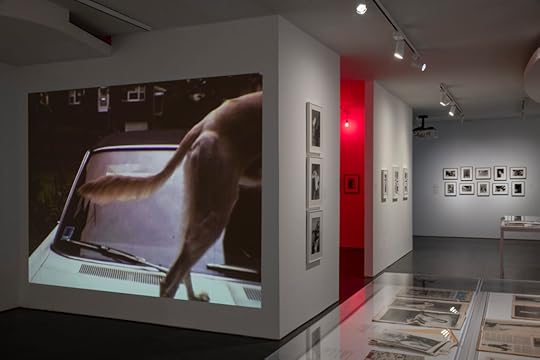
 Installation views of Jimmy DeSana: Submission, Brooklyn Museum, 2022
Installation views of Jimmy DeSana: Submission, Brooklyn Museum, 2022 Photographs by Danny Perez
DeSana was born in Detroit in 1949 to middle-class suburbanites, who raised him and his brother in Atlanta. His mother was a strict Methodist; his father abandoned the family as DeSana entered adulthood. While studying art at Georgia State University, DeSana began making precocious, conceptual photography of suburban houses, generally banal, and of his friends, often naked. But his final thesis, 101 Nudes (1972), is a landmark. Likely taken with a Leica IIIf and lit by a flash, as Sawyer notes in his catalog essay, the portraits form a kind of fanzine of queer friends. DeSana shows off their muscles like he’s making Physique Pictorial, or crouches and crops their bodies like a funnier Man Ray. A drag queen looks right into the camera, bold; a man shoves his face into a pillow, ass beckoning. Bodies are unstable, and DeSana captures how funny, and how frightening, that can be, and how those two emotions comprise desire. Sawyer hangs these prints on the wall like Teen Beat posters in a teenage bedroom. It’s hard not to be a fan.
 Jimmy DeSana, Stephen Varble, 1975
Jimmy DeSana, Stephen Varble, 1975Photograph by Allen Phillips
Evidence and expression in hand, DeSana moved to New York in 1973 and spent the 1970s hanging out at the nightclubs downtown, enjoying the spectacular squalor of Times Square, and working rooms further uptown, like Robert Stefanotti’s gallery on 59th Street. He took early portraits of the Talking Heads and Laurie Anderson and Debbie Harry that quickly established their personae. His non-star subjects also seem like them. Submission positions these images like family portraits. Often, they are black and white, stark as his earlier autoerotic provocation, sometimes lit by a single bulb on the sideline. The lighting doubles their bodies into an architecture for their charisma, or a shadow they couldn’t shake off. When he worked in color, it was those of candy wrappers, neon, the camp saturation of advertising. Recognizable but not realism.
With a wink to the commonalities of darkrooms and backrooms, Sawyer built a red-light district for DeSana’s extensive investigations of BDSM, in which piss is expelled and enjoyed, and gimp-masked figures kneel in toilets or near dog bowls. In Party Picks (1981), toothpicks stuck into gums between teeth make a crown of thorns around a gasping mouth, or maybe make that mouth St. Sebastian’s wound. Cardboard (1985) offers a room with a single, lurid red band of light and corrugated carboard that slices a bending body. In such a place, you might think of Samuel Steward’s card catalog of his conquests, or if Flavin’s work is really about its shadows, or what to do with that butt. DeSana’s frisky, familiar portraits reject the po-faced posing of Mapplethorpe and the social-climbing sadism of Helmut Newton. He gets that such proclivities are mind games played with bodies and bets you might want to play them too.
 Jimmy DeSana, Storage Boxes, 1980
Jimmy DeSana, Storage Boxes, 1980 Jimmy DeSana, Marker Cones, 1982
Jimmy DeSana, Marker Cones, 1982 All photographs © Estate of Jimmy DeSana and courtesy the Jimmy DeSana Trust and P·P·O·W Gallery, New York
Toward the end of his life, DeSana went monumental. Soft Ball (1985) puts a toy on a plinth and conjures an awe somewhere between Ansel Adams and Kubrick. Grill (1985), captures its titular forger of suburban masculinity bent over in blue. It looks like a mammoth cage. It might be about his childhood. Sawyer provocatively asks viewers to return to the beginning when exiting the show, refusing to let death have the last word. Now, it’s almost impossible to resist the sense that DeSana was just getting started. But we must. He did so much, and it was enough.
A decade after DeSana photographed himself hung in a noose, he made Stitches (1984). The self-portrait shows off his sexy Calvin Klein briefs, and also the thick, roping scar he earned when HIV infection (and celiac disease) ruptured his spleen. The sutures are both evidence and prophesy, but really, they’re just a part of him and his art—what he made from mortality. I’m thinking as I write this of the selfie Daniel Davis Aston posted just before he was shot dead at Club Q in Colorado, in which he caresses the stitches of his top surgery. DeSana claimed the right to make bodies as he saw fit. Submission demands we now also have that right. His work is immortal in its unabashed mortality. We might live that way too.
Jimmy DeSana: Submission is on view at the Brooklyn Museum through April 16, 2023.
December 13, 2022
Nan Goldin Reflects on Art, Addiction, and Activism
This interview originally appeared in Aperture, issue 239, “Ballads,” summer 2020.
Nan Goldin moved from Boston in 1978 to Manhattan’s Lower East Side. She was twenty-five years old. New Wave was starting to happen, and so was she. Nan went everywhere with her camera. She was part of the Times Square Show in 1980, on her way, it would turn out, to the Whitney Biennial in 1985 and beyond. She was creating The Ballad of Sexual Dependency (1983–2008) as a slide-show during this time, when the underground, of which she was a star, suddenly riveted the attention of a larger culture. This new youth vanguard was urban and music-driven, as into film as it was into books.
Stylistically, The Ballad of Sexual Dependency claimed descent from Weimar (the echo of a song title from The Threepenny Opera in Nan’s title is deliberate), from the women as well as the men of the Beat generation, and from Andy Warhol. But the toughness was a front. Nan’s early images survive a time of sexual life before AIDS and a love of drugs before the wages of addiction had to be paid. Nan is the witness of a passing American innocence, watching her community as it became decimated by AIDS.
 Cover of the original maquette of The Ballad of Sexual Dependency, ca. 1985
Cover of the original maquette of The Ballad of Sexual Dependency, ca. 1985Courtesy Nan Goldin
The Ballad of Sexual Dependency was first published as a book in 1986. Its more than one hundred photographs show the drive of Nan’s aesthetic—her intimacy with her subjects, her decision not to photograph anyone doing something she herself would not be willing to be photographed doing, her theatrical sense of place, her mastery of visual narrative. The Ballad of Sexual Dependency is a story about love and desire, loneliness and friendship, men and women. The people we see are her friends, her lovers, and the family she had made for herself. Nan has called it “the diary I let people read.” It is a work that evolved as a slideshow from performance to performance. The installation of The Ballad of Sexual Dependency exhibited at the Museum of Modern Art, New York, in the 2016–17 season featured 690 images.
“It was photography as the sublimation of sex,” Nan wrote in 2017, “a means of seduction, and a way to remain a crucial part of my subjects’ lives.” Her story goes a long way toward explaining her work, seen in numerous books. The Other Side (1993), an homage, in part, to drag, followed The Ballad of Sexual Dependency. Then came A Double Life (1994) and the catalog of her spectacular retrospective at the Whitney Museum of American Art, I’ll Be Your Mirror (1996). The Devil’s Playground (2003) encompassed much of her new work at the time. The Beautiful Smile (2007) marked the occasion of Nan receiving the Hasselblad Award. Eden and After (2014) is a touching work about childhood. In Diving for Pearls (2016), Nan engages with art in the collection of the Louvre through her photography. Her work constitutes an autobiography in several volumes, her life as an episodic tale.
The range of subjects, the sheer amount of published photographs, speaks of Nan being always at work, immersed in her purpose to document the movement of a life. Just as her subjects have changed, so has her practice. Her projects, such as Sisters, Saints, and Sibyls (2004) and Memory Lost (2019), take to an unprecedented level the slideshow form she has made her own. Her unique, unforgettable installations have been exhibited in museums and galleries throughout the world. Nan is one of the most critically acclaimed and inspiring photographers working today. The courage she has shown in her work is fueled by a social bravery that makes her formidable as an activist for marginal communities. Luc Sante once called Goldin a “portraitist of souls.”
New York’s Lower East Side, Berlin, Naples, London, Bangkok, Tokyo, Paris—she’s laid her head down in a good many places. The other day it rained when I went to see her where she now lives in Brooklyn. Everything about her place was quiet, tranquil. —Darryl Pinckney
 Nan Goldin, Ivy on the way to Newbury St., Boston Garden, Boston, 1973
Nan Goldin, Ivy on the way to Newbury St., Boston Garden, Boston, 1973Courtesy the artist and Marian Goodman Gallery, New York, London, and Paris
Nan Goldin: Do you mind if I smoke a cigarette? Thanks. I discovered art photography when I took my first photography course. I was nineteen, and it was Diane Arbus, Larry Clark, Weegee, and August Sander. But before then, I was entirely influenced by the glamour of black-and-white Hollywood film and fashion photography, like Guy Bourdin and Louise Dahl-Wolfe. I had already seen Flaming Creatures (1963) by Jack Smith and Warhol’s early films. I saw Trash (1970) many times. We always went to the movies. And not just Hollywood. Truffaut, Fellini, Antonioni. I realized that I wanted to be a photographer from a scene in Blow-Up (1966).
Darryl Pinckney: We can see Hollywood in some of the work. And you were already doing the slideshows in Boston, right? Were those the sort of glamorous, black- and-white photographs of the queens?
Goldin: No, they were terrible pictures of a lesbian community in Provincetown. Because in art school, you had to show what you were doing, but there was no darkroom, so I couldn’t show prints. That’s why I had to show them as a slideshow. Bruce Balboni had shown a slideshow in our apartment in Provincetown with my pictures of Cookie [Mueller] and Sharon [Niesp], and he invited them. We wanted them to like us. There are gorgeous pictures of Cookie and Sharon. I looked at these images recently, but aside from those, the work is banal, boring, and brown.
Pinckney: Are you a very harsh judge of your own work?
Goldin: I imagine so. But I think I’m right about my own work. Anyway, the lesbian community in Provincetown at the time was very small, and all the women were fucking each other, which made it interesting. I fell in love with a woman and obsessively photographed and filmed her for a long time, even after she broke up with me. I guess that was the beginning of what drove me to photograph people.
Then I left Provincetown and found the community at the Other Side [a Boston club]. I was attracted to the glamour and the fact that it was underground.
Pinckney: There’s an edge in the drag queen photographs.
Goldin: Right. They were living something that was so taboo then that they couldn’t even leave the house in the daytime. We went to the Other Side every night. It was our haven and our headquarters. I moved in with Bea and Kenny, who were the most beautiful. I was standing in New York on Second Street and Second Avenue two years ago, and I suddenly heard the name Nancy being called out. I didn’t recognize that name at all. It was Bea from Boston.
We hadn’t seen each other in forty-five years, and she recognized me. She’s just the same—funny and dry. She was still married to the same guy. I went to Boston to have tea with her. It was lovely. And she told me that everyone else in my pictures is dead.
 Poster for The Ballad of Sexual Dependency, with Desperate Living, a film by John Waters, OP Screening Room, New York, March 29, 1982; Artwork by Janet Stein
Poster for The Ballad of Sexual Dependency, with Desperate Living, a film by John Waters, OP Screening Room, New York, March 29, 1982; Artwork by Janet SteinCourtesy Nan Goldin and Marian Goodman Gallery, New York, London, and Paris
Pinckney: You had left Boston in the late ’70s for New York.
Goldin: Yes. I used to hitchhike down to New York to fuck my boyfriend while living in this separatist lesbian community. I’ve always been able to live with ambivalence.
I moved to New York, and I worked as a go-go dancer, like all the girls did, like a lot of women in the art world were doing at the time to have money to do their work. Until I met Maggie Smith [co-owner of the bar Tin Pan Alley in Times Square]. She rescued me. That’s when the work changed. That’s when my view of life changed. That’s when I felt that I was secure in saying that I was political. She gave me that frame. She saw the slideshow at the Times Square Show, and she said, “You’re a very political artist.” That was huge for me. She analyzed it within a gender framework—of politics around gender, the sex trade, and male violence. Working at Tin Pan Alley at the beginning was a liberation for me. I hadn’t known anyone quite like Maggie. She opened big doors for me.
Maggie was so many different people at once. She was involved with that bar and the people who worked behind that bar. And then she was involved with the radical Puerto Rican Liberation Front. And then she had her Women Against Pornography. She was one of the essential people in that. And then also, she loved ballet. Not many people can sustain that much, be so multifaceted.
The first slideshows were constructed in the context of parties, and then underground movie theaters and performance spaces. Maggie used to attend every single one. Editing and reediting is a big part of the story that I like thinking about, and sometimes I would be editing while I was doing the show. And the projector would break down at OP Screening Room, and I would have to leave and go back home and get a bulb and bring it back. And people would still be there. But the audience would be everybody who was in the slideshow. Afterward, they’d be furious about some picture they looked ugly in, and I would take it out. I never had that again, that the slideshow was for the people in the room. Except it did happen in the ’90s. I did a slideshow every week in Bruce Fuller’s apartment for the people in the pictures. They had editorial control.
Pinckney: J. Hoberman had a nice expression about the early slideshows in New York. He said, “Part of the excitement was the sheer brinkmanship of them.”
Goldin: In what way?
Pinckney: Well, would Nan show up?
Goldin: Oh, I thought you meant the content of the work.
Pinckney: No, of the performance.
Goldin: And whether you had to wait five hours.
Pinckney: I can remember your light tables and the hundreds of slides as you would—
Goldin: Edit and reedit. And then, there was this time when I was showing in a gay club on Second Avenue, and the place was packed. Rene Ricard was with me, and there was coke on all the slides. Marvin Heiferman was representing me all those years, and he was ready to drop me. The owner accused us of all being junkies. At the time, I didn’t want to accept that analysis. So, it was brinkmanship of whether I would show up. That’s true.
Pinckney: You always showed up.
Goldin: Eventually.
Pinckney: No, you did.
Goldin: And then J. Hoberman was the first to contextualize it as a film. I was thrilled. It became one of those underground phenomena, like Todd Haynes’s Barbie film [Superstar: The Karen Carpenter Story, 1988], that people had to see. And, as we said in those years, in the ’80s and ’90s, there was no way to see anything unless you were present.
Pinckney: Yes. That’s what gave, I think, the call-and-response with the work.
Goldin: Yes. Exactly.
 Nan Goldin, Trixie on the cot, New York City, 1979, from The Ballad of Sexual Dependency (Aperture, 2022)
Nan Goldin, Trixie on the cot, New York City, 1979, from The Ballad of Sexual Dependency (Aperture, 2022)Courtesy the artist
Pinckney: It was kind of like going to church. I remember it as very vocal.
Goldin: Cookie and I would stand in the back and crack jokes all the time. Now I sit in the back and count how many people are dead, and speak to them through the slideshow. That’s my contact with them. My deep visceral contact with loss. The slideshow’s very much about loss. It was at the time. The loss of my sister, which permeated it. But also, the potential loss in relationships. And, it’s a lot about violence, also, which people don’t talk about much. People write about drugs and parties.
Pinckney: Yes. Or they focus on the moment of violence when you were in Berlin, the battery.
Goldin: The battering, yes, which is essential to the slideshow and to the book. That kind of imagery was not seen at the time. A lot of women came to me and told me their stories, from all over the world, all over Europe and America. I traveled through Europe for a couple of years showing the slideshow.
Pinckney: This is when?
Goldin: 1984. It was never the same show. Every time was different. For one thing, when I was first doing it, I had people read to the images. I later added music, especially after seeing the films of Vivienne Dick. She had an enormous influence on me, the way she handled music. Her segues. Start, stop, go.
Pinckney: I still see a lot of … I won’t call it innocence, but fragility.
Goldin: Well, there’s always been fragility in my work.
 Poster for Ballads of Sexual Dependency, Collective for Living Cinema, New York, May 8, 1983
Poster for Ballads of Sexual Dependency, Collective for Living Cinema, New York, May 8, 1983Courtesy Nan Goldin and Marian Goodman Gallery, New York, London, and Paris
Pinckney: But so much strength in the aesthetic behind it. I think especially about Tin Pan Alley and Maggie and this women’s collective, however informal it was, supporting the work and feeding into this work, starting with how much Vivienne Dick’s films meant to you.
Goldin: When I started working at Tin Pan, I thought it was an escape from the art world. I wasn’t really in the art world, so I don’t know what I was escaping from. I retracted from that world and went to Times Square. It also permeated my sensibility, not my artistic sensibility, but my life and my sense of self.
Pinckney: Were drugs a part of that?
Goldin: I was taking coke. I wasn’t doing dope then. My first drug during the ’70s was quaaludes, at art school with the queens. I lived on quaaludes for about seven years. Loved them. They gave me a big social personality.
Pinckney: Looking at these photographs again, I was very moved. Well, first, everyone’s youth. Maybe that’s …
Goldin: Envy.
Pinckney: … where I feel the fragility. And their beauty. But, also, the photographs now seem to me so much more composed than they did at the time. They’re not loose. The composition is very strong in each.
Goldin: That’s interesting.
I have often been able to show people how beautiful they are, when they don’t know it.
Pinckney: And also, they have a documentary impact beyond the relationships you were recording and talking about. There’s so much social history in a red telephone. Who knew?
Goldin: It’s ethnography, right?
Pinckney: The light is extraordinary.
Goldin: This is my eye. I wanted to get close to people. But, also, I was very interested in where people were situated in a room, and what was in the room. But it was often just to feel close to people. I couldn’t have been taught this eye. You don’t teach someone an art.
Pinckney: No. There is something called the mystery of talent. There is one photograph in there of a woman in her slip, and her boyfriend in a slip. I think of that as a very androgynous moment, that old-fashioned word.
Goldin: I still love that word. They weren’t androgynous. That was more a sort of playing with sexual games.
Pinckney: We don’t know who they are. It’s a guy and a girl, and they’re both wearing slips. That’s another thing about The Ballad. The eroticism of it is stronger than ever. But it’s never been pornographic.
Goldin: I love that it’s erotic, people with dirty feet. You can smell the people, and you can’t smell photography, usually. It’s very tender.
 Nan Goldin, Brian on the Bowery roof, New York City, 1982
Nan Goldin, Brian on the Bowery roof, New York City, 1982Courtesy the artist and Marian Goodman Gallery, New York, London, and Paris
Pinckney: Or the photograph of Brian, your then boyfriend, on a Bowery rooftop.
Goldin: That’s a story that doesn’t exist anymore. Even the skyline is completely destroyed. I didn’t photograph people I didn’t love. I had to feel a connection.
Pinckney: Maggie provided a venue for downtown artists at Tin Pan. We could connect.
Goldin: I miss Maggie. She also took you to things. Besides politicizing me, she introduced me to theater and ballet and skin care. That was the big one. No, she loved my work. She loved me.
Pinckney: Most of the junkies we met when we thought—
Goldin: You’re not allowed to use that word anymore.
Pinckney: You’re not?
Goldin: Substance use disorder. That’s important, politically. But we can call each other junkies.
Pinckney: Oh. I always think of the William Burroughs title.
Goldin: Yes. But it’s about respect and destigmatizing.
Pinckney: You and I speak the language of our time.
Goldin: Exactly.
Pinckney: There was a time when we didn’t think cocaine was addictive.
Goldin: I know. We grew up on that note. I believed that all through the ’80s when I was totally strung out on coke. I didn’t know what was happening because it wasn’t addictive.
Pinckney: An addict was a heroin addict, and most addicts weren’t nodding on the stoop. They were going to work and coming home.
Goldin: It’s still true. It’s still true.
Related Items
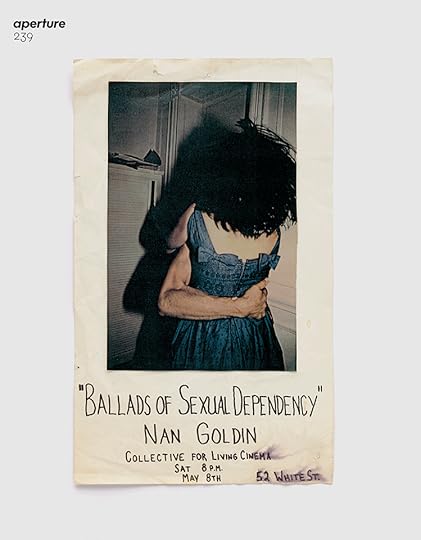
Aperture 239
Shop Now[image error]
Aperture Magazine Subscription
Shop Now[image error]
Nan Goldin: The Ballad of Sexual Dependency
Shop Now[image error]Pinckney: That’s the world of addiction, of old-fashioned addiction.
Goldin: But it’s so important to take the onus off. And those words are stigmatizing. I referred to myself as a junkie at the VOCAL [Voices of Community Activists & Leaders] office one day, and the old-time junkies jumped on me. “We don’t use that word. It’s really important.” But I wanted to be a junkie. I grew up wanting to be a junkie. I got the [Velvet Underground & Nico] album with Warhol’s banana on the cover when I was thirteen, and I was in a situation where I was very isolated, and that album was my attachment to life. It framed my view of the world.
And because I shot dope when I was eighteen, for a year, and then put the needle down and met quaaludes, I thought I wasn’t an addict because I put the needle down.
Pinckney: I was going to say that with the passage of time, I feel the drugs much less in the photographs than I did.
Goldin: Good. My new piece Memory Lost is about drugs. I just came out of a huge addiction three years ago. Enormous. My dealer called me and said that the OxyContin that I was addicted to had been thirty dollars each, and he was having a sale. He called me at the hospital. I think he’d lost his biggest customer.
Pinckney: He was having a sale?
Goldin: Twenty-five each. Somehow, it didn’t grab me. But soon after, he died. If he hadn’t died, I would have a really hard time staying clean because he came 24/7. And he was constantly freebasing. He used to try to get me to freebase. He would kiss me, although he was ugly, and it was nothing romantic, just to blow the freebase into my mouth. And that’s all I would do. I never picked it up. I’m so lucky because that would’ve been the end.
 Nan Goldin, Cookie at Tin Pan Alley, New York City, 1983
Nan Goldin, Cookie at Tin Pan Alley, New York City, 1983Courtesy the artist and Marian Goodman Gallery, New York, London, and Paris
Pinckney: Talk about something that isolates you.
Goldin: I was so isolated. There’s a lot of sadness. That has to do with looking back on the images now.
Pinckney: The photographs capture the complexity of then, the sadness within the late nights and parties. The one of Cookie in Tin Pan is really so striking in every way.
Goldin: That’s because it’s lit by movie lights. It was taken during the filming of Variety.
Pinckney: But it’s also the moment you capture. There’s a drink. There’s a cigarette. And her arms are folded as though she’s disinterested.
I remember Luc Sante writing once that one of the surprises in your work is that there you were, in the same scene with all this, and yet, you could take these pictures.
Goldin: I had to take these pictures. They gave me a reason to be there. I think the whole reason that I write about in The Ballad, about my sister’s death and the need to record everything, was predominant. It wasn’t an act of will or very much about pursuing art. It was out of need. All my work, I think, is out of need.
Pinckney: So the photography leads you to something else, even if it’s another city or another person?
Goldin: The photography took me traveling, in many different ways. And, most of the time, the relationships came first and then the pictures. Sometimes the pictures came first and then the relationship. The pictures became a way to introduce myself to someone or to become important in somebody’s life. I have often been able to show people how beautiful they are, when they don’t know it.
Pinckney: Was this the feeling behind your book The Other Side?
Goldin: Yes. Very much. Starting with the early black-and-white work.
Pinckney: Then, after The Other Side, you get these terrific photographs using natural light.
Goldin: Yes. I stopped using the flash fifteen years ago. And I don’t photograph much anymore. What I’m working with is existing footage. My piece Sisters, Saints, and Sibyls, for instance—it’s almost entirely archival footage, including snapshots from my childhood. And for Memory Lost, I didn’t shoot anything. But I photograph the sky. I have a relationship with the sky. For me, it’s magic. It gives us our sense of space and size in the world. I try to photograph people, but it doesn’t work anymore.
Pinckney: Why is that do you think?
Goldin: I don’t know. I don’t have it anymore. But there are very few instances in which I feel the desire to photograph someone. It’s not my life anymore. People are more self-conscious as they get older. My world isn’t quite so free. We’re not so free. Not so off the grid. It’s on the grid.
Pinckney: Is it age?
Goldin: And lifestyle.
Pinckney: We ask different things of a city, the older we get.
Goldin: Well, I ask different things of my friends. I have different types of relationships. I don’t party. The relationships are much quieter and calmer, and I spend a lot of time alone. But I also spend time with people, working with them. I was bemoaning that to my therapist, and she said, “Well, you love to work.” So it’s a fun and loving thing to do.
Pinckney: Is it also that you have reached a time in life when to reflect and look back is natural?
Goldin: No. I analyze less, and I really don’t look back much unless I see something like Sisters, Saints, and Sibyls, and then it’s very scary to go back there.
There are a lot of broken relationships, there’s a lot of death, an enormous amount of death in my community. And there are a lot of relationships that, at some point, I wish I could fix, but I’m not sure I can. I would like to.
 Nan Goldin, Twisting at my birthday party, New York City, 1980, from The Ballad of Sexual Dependency (Aperture, 2022)
Nan Goldin, Twisting at my birthday party, New York City, 1980, from The Ballad of Sexual Dependency (Aperture, 2022)Courtesy the artist
Pinckney: Memory Lost is certainly really the whole story in a way.
Goldin: It’s about being addicted and the darkness of life.
Pinckney: And then the priory photographs [taken in a London hospital] are very touching, but the self-portraits in Memory Lost are chilling.
Goldin: I used mostly myself and my friend Guido [Costa], whose idea it was to make the piece. And a few other people. But most of the other people are dead. There are a few people still alive, but I tried to make them more or less anonymous.
Pinckney: But the beautiful dancing frame—you know, the black-and-white frame?
Goldin: Oh, you mean the old Super-8 at the beginning and the end?
Pinckney: Your things are very consciously constructed.
Goldin: Yes. Very. I would say that my work is editing. I’ve always said that primarily the art is not photography, the art is editing. I’ve always said that if anyone would have taken as many pictures as me they could be considered a good photographer.
But that’s not the point. The point is what I’ve done with the pictures. The point is about making cinematic work out of still images, and the editing is where I feel my intelligence lies.
Pinckney: The recent work is much closer to what you were talking about when you say you think of yourself in the way of a filmmaker. It’s moved much more in that direction than The Ballad.
Goldin: I think so. The Ballad is a pretty straightforward form. There are slides, and there’s music. These other two pieces have a lot more elements. In Sisters, Saints, and Sibyls, it goes from archival, to film, to stills, and from music, to narration, to voices. And then with Memory Lost, there’s the old Super-8 film, and then there are the old answering machine tapes, which I think this generation won’t even recognize what they are because they’ve never seen an answering machine. It’s crazy.
Pinckney: The dial tone.
Goldin: Exactly. They won’t know what that is.
Pinckney: There are a lot of cries for help coming through.
Goldin: And I sound so coked up. The Ballad for me now is about loss. And while Memory Lost does not feel like a hopeful piece, there is some hope that’s essential to it. I wouldn’t have made it if I didn’t have some hope.
Pinckney: Well, the sky makes its appearance.
Goldin: And it ends with [Franz] Schubert and Gabor Maté, a philosopher, psychiatrist, and writer who I respect so much, saying that it’s only human to do drugs.
Pinckney: And then, the woman falls back into the water. It’s beautiful.
Goldin: Thank you. I felt it was very important to use that text by Gabor to destigmatize drugs. It could have been at the beginning, but then it would have been a little heavy-handed. But I want people to leave with some relief of the stigma of what they’ve just seen.
Pinckney: It’s in the right place. Actually, it kind of deglamorizes it.
Goldin: Well, that’s not a glamorous piece.
Pinckney: No. Whereas Ballad—
Goldin: Ballad is glamorous.
Pinckney: Yes, the youth, and the subject is desire and love.
Goldin: And passion and sensuality. Memory Lost is not a sensual piece.
Pinckney: The colors are super saturated. And each became a memory as soon as it was photographed.
Goldin: That saturation is how I see the world, but I don’t see memory that way.
Pinckney: No?
Goldin: For me, I don’t have that same relationship to memory. I don’t see photographs as freezing life because of the way that I use them. I never believed in the decisive moment. I never believed that one photograph encapsulates the whole of one person. Of course, published, there are single images on a page, but the whole way that I frame my work is in multiple images. Now I use grids when I show pieces on the wall, which I’ve wanted to do since the ’80s, but I couldn’t afford it then. They are like storyboards. I show a lot of grids and triptychs and diptychs.
In the late 1990s and the 2000s, I was influenced by color-field painting. It doesn’t relate to my work, but I like art that’s very far away from me. And I started making grids that were just colors. Black, red, a kind of homage to the color field painters.
Pinckney: Are some of the paintings in Memory Lost yours?
Goldin: They are mine.
Pinckney: Well, it is the kind of stuff that comes with the price. Not to sound romantic.
Goldin: It’s not romantic, and it has a price. As I realized going back into Sisters, Saints, and Sibyls, it’s a high price. It’s a high price to make it, and it’s a high price for me to look at it.
Pinckney: Nothing is casual.
Goldin: Unfortunately not. Yet there are images in The Ballad that are very casual, that don’t have that same weight of self.
 Nan Goldin, Nan and Mark Mahoney in Bruce’s car, Boston, 1977
Nan Goldin, Nan and Mark Mahoney in Bruce’s car, Boston, 1977Courtesy the artist and Marian Goodman Gallery, New York, London, and Paris
Pinckney: Well, because a lot of what’s in The Ballad is celebratory.
Goldin: In Sisters, Saints, and Sibyls, it’s an accusation against American suburbia—what a toxic life suburban America was in the ’60s. It’s also very angry toward my family and the family structure.
Pinckney: You talk about how you didn’t like Julia Margaret Cameron’s work at first, and then, after a while, you began to appreciate how she took an accident and made it her kind of aesthetic.
Goldin: Yes, slightly out of focus and like spirit photographs almost. The best pictures of mine are accidents. Memory Lost is entirely accidents. It was so much fun to find the worst photographs. The less that was in the photograph, the better it was. The darker it was, the better it was for that piece. But the voices are really important.
Pinckney: And the voices add a completely different theme. It made me think about your writing. You don’t do that anymore either?
Goldin: I needed to write. I needed to draw. To keep myself alive in both those situations, both times. So when you don’t need it, it’s too painful. It’s too difficult. You are a writer—you know how difficult and horrible it is. The empty page is the nastiest thing in the world. And I think the mark, the pencil mark, is the truest sign of mankind. I needed a disinhibitor to do that.
Pinckney: But has all of your work shared this sense that I must do it in order to survive?
Goldin: I don’t know that I thought in those terms, but I knew I had to do it. So you know my diaries, of which there are thousands—I have to make sure they’re destroyed when I die because they weren’t written for anyone except for me to stay alive, and basically it’s thirty years of: “I’m so depressed.” “I’m so fat.” Kenny once stole them, and read them, and said they were so boring. And they are. There’s nothing in them that other people should read. It will completely destroy the myth of Nan Goldin. They’re just about me, and my pain, and nothing else. There are no great observations about New York in the ’80s. They’re not Warhol’s diaries. They’re just about being depressed.
Pinckney: People turn to diaries for different reasons.
Goldin: And mine were not witty observations.
Pinckney: The work you’re doing now, though, it’s important.
Goldin: We are really survivors.
Pinckney: I’m afraid so.
Goldin: It’s a miracle that I’m alive. Doesn’t make any sense that I should be.
Pinckney: Some of the things I did, some of the places I was, some of the chances I took as though nothing bad could ever happen.
Goldin: Falling into that swimming pool, falling, falling, falling. A lot of falling, a lot of hospitals. It’s hard for me to own that period of my life. I feel there is a big separation. Oh, and there’s also the myth of Nan Goldin. Nan Goldin is not in this house. Nan Goldin’s external, and I have very little to do with her. Only when I’m giving a talk, then I’m Nan Goldin. At my opening, I’m Nan Goldin. But otherwise in my life, I’m Nan, and that’s really important to me. If you believe your own myth, it’ll destroy you.
 Nan Goldin, Sunny at the spa, distortion, L’Hôtel, Paris, 2009, from the series Memory Lost
Nan Goldin, Sunny at the spa, distortion, L’Hôtel, Paris, 2009, from the series Memory LostCourtesy the artist and Marian Goodman Gallery, New York, London, and Paris
Pinckney: Your own experience was a part of this from-the-inside feel of your work about women and desire. However you feel about the period now, you weren’t separate from your subjects then. Maybe that is why the sense of distance is so strong now. But how vivid and real the images are. And maybe that’s part of what gives the work its freshness today, because it is still transgressive, though that’s an overused word.
Goldin: I like it.
Pinckney: Unexpected.
Goldin: Transgressive is better. I love it. I mean, let’s hope to be transgressive.
Pinckney: Okay. Well, it certainly was, even just a pregnant girl—
Goldin: Naked. Nowadays that’s even more transgressive. People are much more conservative. These images are more shocking now. Nudity is more shocking now.
Pinckney: It’s strange to think that these images, which, as we were saying, are not pornographic, are so threatening in 2020. At one point, they were so liberating.
Goldin: They’re taboo almost. Which is really scary. The old taboos were lifted, and now they’ve been recycled. When it’s shown, there are thousands of young people who go to see it, and I wonder what it says to them.
Pinckney: First thing it says is: You weren’t there.
Goldin: True. Everyone’s obsessed with the ’80s. They think they know the ’70s and ’80s from watching The Ballad. They don’t. But it must mean more to the kids than just that. They must be able to see themselves in The Ballad. Not just the clothes, but on some emotional level.
Pinckney: There’s a line through the work, the drag queens, The Ballad, The Other Side. Do you think that some of the changes of setting have to do with what used to be called geographics?
Goldin: Well, I skipped America for a long time, and I didn’t go back at all in the 2000s. But it’s not like I really experienced Berlin or Paris. I just hid for about ten years. I want to be careful not to do that again. It’s easy for me to do that. I have to make myself engage with the world. I’m so shy. That was what drugs did for me—they took away that terrible binding shyness. And I thought that they were giving me a social personality.
Pinckney: This is an irony the work and the activism share—bold public confrontation from the most private experiences, a confessional aesthetic from a vulnerable and therefore carefully recessed personality.
Goldin: So I have to try to find other ways to get over it. I’ve made my life an open book, which, nowadays, has served me well in this online culture of digging up people’s pasts and canceling them. It has served me well that I had this need to make the private public. There are secrets, but secrets before there was the Internet. The Sackler family, or someone, sent a private investigator here. He parked outside the house, following my assistant home, taking pictures. It’s been very surprising that they’ve not tried to out me about anything. Though basically, there’s nothing to out me about because I made everything public. They can’t exactly announce that I was addicted to drugs. I mean, deep scandal on that.
Pinckney: What could he do?
Goldin: Nothing. Megan and Harry, the two lieutenants of PAIN [Prescription Addiction Intervention Now], went down and confronted him, took a picture of him, and then he disappeared.
 Nan Goldin staging a “die-in” at the Harvard Art Museums, 2018
Nan Goldin staging a “die-in” at the Harvard Art Museums, 2018Photograph by TW Collins
Pinckney: When did PAIN begin?
Goldin: In 2017, after I read an article in The New Yorker by Patrick Radden Keefe called “The Family That Built an Empire of Pain.” He exposed the Sackler family of multibillionaires who ignited the opioid crisis through their cynical greed. Their family business developed and marketed OxyContin, the most powerful narcotic painkiller on the market. They pushed it like the best drug dealers. Supposedly, the company made thirty-five billion dollars off it. They fed on the stigma of addiction and blamed the drug users. I always thought of them as philanthropists, but they were using museums to wash their reputation.
PAIN started with a focus on pressuring museums to stop taking their money. It also shamed members of the Sackler family who cared about their social status. We staged sexy actions that got a lot of media attention at the Guggenheim, and at the Metropolitan in New York, the Victoria & Albert in London, and the Louvre in Paris. The actions succeeded in helping us to win our demand that museums stop accepting their funding. The Louvre actually took their name down.
Pinckney: Has your activism had an adverse effect on your working life?
Goldin: People warned me at the beginning that this could be very dangerous. They were talking more about my career and how it could affect that. And the actual physical danger was an issue at the beginning, but nothing happened. Nobody made up the crisis. It’s really out there and was underacknowledged for a long time. People didn’t do the shocking arithmetic.
Pinckney: You and your group put the conversation in the mainstream.
Goldin: It’s gotten out and stayed out, and it’s stayed out there because of the support of the press.
Pinckney: You’ve always had an activist side.
Goldin: It wasn’t focused until I got sober three years ago, and I realized what was going on in the world and felt I had to do something. So, I chose what I know best, which is drugs, something I understand in my body. I didn’t know the tragedy of what was going on, and I became enraged. That rage is what provoked me to start the group.
I have to say that being in the public with PAIN, with the group that I started, has kept me sober.
Pinckney: You know how we say you have to get sober for yourself ? But now yourself includes a vast number of people.
Goldin: I think there’s the whole ideology that you need something bigger than yourself to stay sober. For me, that is being political in the world.
Pinckney: They are your higher power, other sufferers?
Goldin: No, not them. The idea of taking a political stance and making it public is my higher power. It’s something much larger than me.
Pinckney: Like the Artists Space show in ’89, the AIDS show [Witnesses: Against Our Vanishing]?
Goldin: I was newly sober then, too. I talk about the Artists Space show as part of my political growth, but I can also associate it with sobriety.
Pinckney: It was very important at the time. Two of the most important unifying elements that I think of when I think of you are an uncompromising sort of intelligence governing the work, but also this will to beauty.
Goldin: I think beauty is very important in art, because, after all, it’s an aesthetic experience.
Pinckney: These works, some of them, are very raw but never ugly.
Goldin: Yes, exactly. I have a very big aversion to ugly. I still think beauty is another level that we need. It’s a rest, it’s a caress, beauty. You know Arthur Jafa’s work? He makes these incredible videos about race. Brilliant. They are a condemnation and a provocation. One was just shown at the Museum of Modern Art [APEX, 2013]. And, you know, it can be about the ugliest things in the world and still be beautiful, if you consider honesty a form of beauty.
Pinckney: That’s Nan. You’re always beautiful, Nan.
Goldin: Thank you.
Subscribe to Aperture and never miss an issue.
December 7, 2022
Inside the Revolution Is Love Book Launch Extravaganza
On Thursday, November 17, guests gathered at 99 Scott Studio in Bushwick, New York for a book launch extravaganza hosted by B. Hawk Snipes and Qween Jean in honor of Revolution Is Love: A Year of Black Trans Liberation. The night featured DJ sets and dancing from a joyful crowd ready to celebrate the recently released publication and revel in community.
The activist, artist, and organizer behind Revolution Is Love, Qween Jean said of the evening, “To me, tonight is what Revolution Is Love symbolizes: we are beautiful people, we are brave people, we are talented people, and we deserve to live. Tonight, we unleash all of the power, the music, the vibrancy, because we are owed it.”
 Qween Jean makes opening remarks to crowd, November 17, 2022.
Qween Jean makes opening remarks to crowd, November 17, 2022.Photo by Laura Randall.
The publication is a powerful visual record of a contemporary activist movement in New York City, and a moving testament to the enduring power of photography in activism, advocacy, and community. Twenty-four photographers were gathered to share images and words on the contemporary Stonewall Protests started in June 2020. Through photographs, interviews, and text, Revolution Is Love celebrates the power of shared joy and struggle in trans community and liberation. Many of the book’s contributors were in attendance at the November launch event including Ramie Ahmed, Brandon English, Deb Fong, Stas Ginzburg, Chae Kihn, Erica Lansner, Daniel Lehrhaupt, Caroline Mardok, Ryan McGinley, Josh Pacheco, Jarrett Robertson, Cindy Trinh, Sean Waltrous, and Ruvan Wijesooriya.
The night’s guests were treated to performances from Linda La, Mariyea, Basit, Lady Jasmin Van Wales, Vuyo Sotashe, and others. DJ sets from Byrell the Great, Bronz3 Godd3ss, and Rajah Rah energized the party late into the night.
In a moving speech, Qween Jean said, “Revolution Is Love is a love letter to the Queer and Trans folks who are fighting desperately to be seen, to not only have their rights validated, but to have them protected. It is an honor to fight for liberation, it is an honor to show up and fight for Black Trans Women each and every day.”
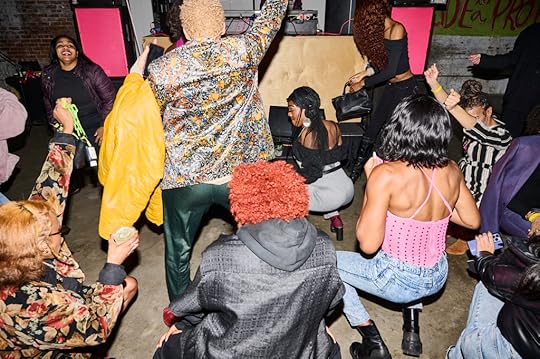 Guests dancing at 99 Scott.
Guests dancing at 99 Scott.Photo by Ye Fan.
 Book Launch made possible, in part, by Yola Mezcal. Photo by Serena Nappa.
Book Launch made possible, in part, by Yola Mezcal. Photo by Serena Nappa.  Guests enjoy the night. Photo by Ye Fan.
Guests enjoy the night. Photo by Ye Fan. 
Keith Scott, Victor Rodrigues, Nick Varaguez, Aziz Osko, Laurent Claquin, Jacob Sparling, and Fataah Dihaan. Photo by Laura Randall.

Cindy Trinh. Photo by Laura Randall.

Dallas Diaz and Lori Ro. Photo by Laura Randall.

Alex Schlecter, Emily Patten, and Taia Kwinter. Photo by Laura Randall.

Max Battle and Alex Galan. Photo by Laura Randall.

Lizzie Soufleris, Scott Semler, Sam Kang, Adrian Ababovic, Emily Patten, and Maggie DiMarco. Photo by Laura Randall.

Keith Scott, Laurent Claquin, Jacob Sparling, and Fataah Diham. Photo by Laura Randall.

Jarrett Key and Jon Key. Photo by Laura Randall.

Nick Haby, Daniel Lehrhaupt, and Andrew DeMio. Photo by Laura Randall.

Antonio Vascual, Bryan Russel Smith, and Fabian Bernal. Photo by Laura Randall.
Previous Next Qween Jean and Laurent Claquin. Photo by Serena Nappa.
Qween Jean and Laurent Claquin. Photo by Serena Nappa.  Book Launch made possible, in part, by Jack’d App. Photo by Serena Nappa.
Book Launch made possible, in part, by Jack’d App. Photo by Serena Nappa.  Book Launch made possible, in part, by MAC Cosmetics. Photo by Serena Nappa.
Book Launch made possible, in part, by MAC Cosmetics. Photo by Serena Nappa.  ALONE. Photo by Serena Nappa.
ALONE. Photo by Serena Nappa.  Brandon English and Josh Pacheco. Photo by Ye Fan.
Brandon English and Josh Pacheco. Photo by Ye Fan.  Jasmin Van Wales. Photo by Laura Randall.
Jasmin Van Wales. Photo by Laura Randall.  Maya Margarita and Ceyenne Doroshow. Photo by Serena Nappa.
Maya Margarita and Ceyenne Doroshow. Photo by Serena Nappa.  Linda La. Photo by Serena Nappa.
Linda La. Photo by Serena Nappa. 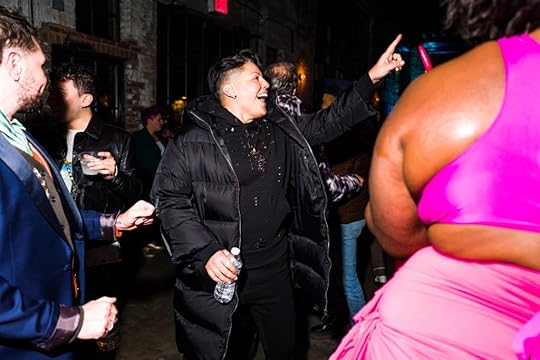 Sara Ramirez. Photo by Ye Fan.
Sara Ramirez. Photo by Ye Fan.  Qween Jean. Photo by Ye Fan.
Qween Jean. Photo by Ye Fan.  Arewa Basit and party guest. Photo by Ye Fan.
Arewa Basit and party guest. Photo by Ye Fan.  Photo by Serena Nappa.
Photo by Serena Nappa.  Kamyo (K.K De La Transcendence) and party guest. Photo by Serena Nappa.
Kamyo (K.K De La Transcendence) and party guest. Photo by Serena Nappa.  Qween Jean, Ora Wise, and B. Hawk Snipes. Photo by Serena Nappa.
Qween Jean, Ora Wise, and B. Hawk Snipes. Photo by Serena Nappa.  Sinn Chhin. Photo by Abi Benitez.
Sinn Chhin. Photo by Abi Benitez.  Adam Eli. Photo by Abi Benitez.
Adam Eli. Photo by Abi Benitez.  Photo by Serena Nappa.
Photo by Serena Nappa. Related Items
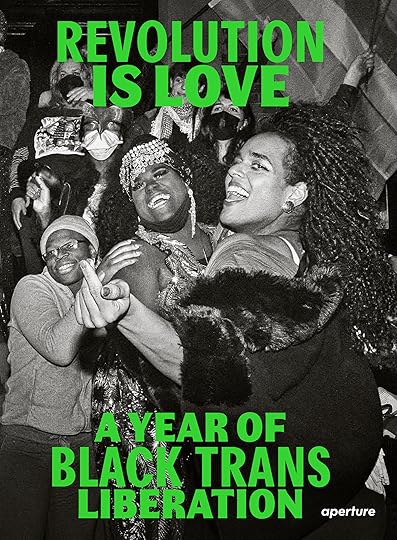
Revolution Is Love: A Year of Black Trans Liberation
Shop Now[image error]
Aperture 242
Shop Now[image error]Book Launch made possible, in part, by Black Trans Liberation, ALL, MAC Cosmetics, J&K’s Soul Food, Trans Equity, Jack’d App, Yola Mezcal, and Perrier.
For a pro-account on Jack’d use promo code “APFDN2022.”
This project was made possible, in part, with generous support from David Dechman and Michel Mercure, in honor of Slobodan Randjelović; Elaine Goldman; and Michael Hoeh.

December 6, 2022
Grace Wales Bonner on the Photographers That Inspire Her Visionary Fashion Design
Fashion’s constant churn may mean that nods to the past come and go without much fanfare. But for the celebrated London-based designer Grace Wales Bonner, cultural references are conjured with careful intention. They become a form of reckoning and homage, a way to center Black artists and thinkers within a generous, ever-growing constellation of ideas. One clothing collection from 2019 was named Mumbo Jumbo, after Ishmael Reed’s 1972 novel.
Writing on Wales Bonner in The New Yorker, the critic Hilton Als reflects that she “aims to make the broken history of the Black artist and intellectual in African, European, and American culture whole.” She does this through her diligent research, an eponymous label, and high-profile collaborations with other companies, such as Christian Dior and Adidas, that expand her reach.
Photography is central to this project. Past collections have been inspired by John Goto’s 1970s-era portraits of British Caribbeans of African descent and Sanlé Sory’s stylish studio images from Burkina Faso. Wales Bonner has recently collaborated with Liz Johnson Artur, Paul Mpagi Sepuya, and Tyler Mitchell. Her interest in working with artists extended further in 2019, when she presented a multimedia exhibition at London’s Serpentine Galleries that explored relationships between visual art, spirituality, and mysticism. Last August, the curator Ekow Eshun spoke with Wales Bonner about how she uses design to salute the past and imagine the future.
 Spreads from Imamu Amiri Baraka (LeRoi Jones) and Fundi (Billy Abernathy), In Our Terribleness (The Bobbs-Merrill Company, 1970)
Spreads from Imamu Amiri Baraka (LeRoi Jones) and Fundi (Billy Abernathy), In Our Terribleness (The Bobbs-Merrill Company, 1970)Ekow Eshun: When you graduated from Central Saint Martins, in 2014, you bought a copy of In Our Terribleness, the 1970 Amiri Baraka and Billy Abernathy book that combines poetry and photography. Why that book?
Grace Wales Bonner: I remember it was quite an investment after I’d graduated. I got a copy signed by Baraka. I guess it shows my priorities and what I wanted to spend significant money on at a time when I probably didn’t have any money. There was the poetry, or the Ebonics, the sound of Blackness, and then also a visual record and the poetry and photography mirroring each other. The intonation of Baraka’s writing informing the rhythm of the book and the layout. Such incredible photographs, but the poetry has equal strength. It merged a lot of things.
Eshun: Yes, it’s a really striking synthesis of image, text, and design.
Wales Bonner: When I was leaving school, I wasn’t sure if I would be a designer. I thought I could be an art director. I was interested in a holistic way of representing fashion. It wasn’t just about clothing but about clothing in context. There’s a lot that can go into that, whether it’s thinking about the sounds that you’re hearing at the time, or the literature that you may be exposed to. I was also drawn to unselfconscious portraiture and photography that gives you a record of style at a certain time. Images that weren’t consciously fashion images. Another book that has that kind of format is Roy DeCarava’s The Sweet Flypaper of Life (1955), with poems by Langston Hughes. I picked up on the lineage of that book, where photography and poetry have some relationship, which is something I explored with Rhapsody in the Street, a magazine I curated. It’s not about images in isolation, but it’s about the freedom to interpret with poetry using a more abstract or romantic imagining around these images, not necessarily in a contextual or historical approach.
 Tyler Mitchell, Untitled, 2022, for the Kerry James Marshall and Wales Bonner capsule collection
Tyler Mitchell, Untitled, 2022, for the Kerry James Marshall and Wales Bonner capsule collection© the artist
 Paul Mpagi Sepuya, Mirror Study for Grace (0X5A2018), 2017
Paul Mpagi Sepuya, Mirror Study for Grace (0X5A2018), 2017Courtesy the artist; DOCUMENT, Chicago; Galerie Peter Kilchmann, Zurich; and Vielmetter, Los Angeles
Eshun: Let’s discuss the photographers you’ve chosen to collaborate with: Paul Mpagi Sepuya, Liz Johnson Artur, and Tyler Mitchell. What led you to them?
Wales Bonner: There is a sense of curation around the people I work with, but there’s often a natural and emotional relationship that is a starting point. For example, Paul Sepuya—I saw his exhibition in New York. This was 2017 or 2018. I was really moved by it, by the attention to detail in the aesthetics, the frames, the space around the images. I could tell that he had incredible taste. I just emailed him and said, “I’m a really big fan, and I’d love to meet.” I ended up going to his studio in LA. He’s so informed in everything he does. I do think about photographic archives, and he’s someone who engages with archives. He told me that he used to archive older Black artists’ work for them.
Eshun: In your office, which I’ve been to, you have a lot of books that you’re looking at and thinking about. What is compelling to you about that process of archiving?
Wales Bonner: For me, researching is an artistic practice for myself—or even a spiritual practice. That’s the art form that I feel like I connect with most naturally. But I also like the fact that it doesn’t need to result in something for Wales Bonner clothing.
I want to create more space for that practice. Within fashion, there is a specific cycle, an output and a pace to it. I’ve been looking at how to safeguard my process. Actually, I now have a grant for the next four years to focus on research.
 Aperture Magazine Subscription Get a full year of Aperture—and save 25% off the cover price. Your subscription will begin with the winter 2022 issue, “Reference”.
[image error]
[image error]
Aperture Magazine Subscription Get a full year of Aperture—and save 25% off the cover price. Your subscription will begin with the winter 2022 issue, “Reference”.
[image error]
[image error] 
In stock
Aperture Magazine SubscriptionGet the collectible print edition and the digital edition four times a year, plus unlimited access to Aperture’s online archive.
$ 0.00 –1+ View cart Description Get a full year of Aperture—and save 25% off the cover price. Your subscription will begin with the winter 2022 issue, “Reference”.Eshun: Every one of your collection shows comes with texts and also some of your visual references. It’s a very particular approach—this insistence that some of these influences that you’re drawing from, or are in conversation with, are made explicit.
Related Stories Essays Tyler Mitchell’s Love for a Common Way of Life
Essays Tyler Mitchell’s Love for a Common Way of Life
 Photobooks For Paul Mpagi Sepuya, Books Are a Way to Think About Time
Photobooks For Paul Mpagi Sepuya, Books Are a Way to Think About Time Wales Bonner: What I do is connected to a lineage of artists and writers, and so informed by that history that it’s about transparency— revealing that process and documenting it quite methodically so that people can follow those threads. That was an intention at the 2019 Serpentine exhibition [Grace Wales Bonner: A Time for New Dreams], to show how different artists have informed a development of thinking. I want to point to those things. And it’s more for my own process really, to mark certain moments. It is often fragments: a memory of a text or an isolated image. There’s a lot of space to fill in gaps and to create worlds around these references.
The way I think about references is that they’re a library. Everything that’s in there is important.
Eshun: Can you talk about some of the visual decisions you made for the Serpentine show in terms of working as an artist and a curator rather than as Grace Wales Bonner, the fashion designer?
Wales Bonner: There’s definitely a different process. The actual making connections between artists crosses over, but with that exhibition, I wanted to transform the gallery space into a place for reflection and meditation. I was thinking a lot about the idea of a portal, whether that’s a spiritual assemblage, like, say, a shrine, that allows you to interact or have communion, or whether that’s a musical meditation that transports you. Ben Okri wrote invocations for the shrines, which is how I loosely thought about the collection of objects and artworks. He also wrote these interruptions within the space that were on the ceiling or in places you wouldn’t expect they would be. There was a sound shrine that I made, which would come on only at certain times. There was this element of the unexpected, for things not to be perfectly neat, for there to be space to be subtly disruptive. More than anything, it was about an emotional quality and how people would feel in that space.
 Installation view of work by Liz Johnson Artur in A Time for New Dreams, Serpentine Galleries, London, 2019. Photograph by and courtesy the artist
Installation view of work by Liz Johnson Artur in A Time for New Dreams, Serpentine Galleries, London, 2019. Photograph by and courtesy the artist Eshun: The photographer Liz Johnson Artur made a kind of shrine, too, for the exhibition. What did you see in her work?
Wales Bonner: I think she’s an exceptional artist and someone who has archived history. For me, it’s also about a level of excellence in her photography. That’s probably a connection among the people I tend to drive to, that they are mastering their craft. Sometimes I feel out of my depth with the talents of the artists I’m working with, and maybe that’s good and motivating. With Liz, photography is almost a material to make art from. The way that she presents her imagery is elaborate.
 John Goto, Lovers’ Rock 02, Lewisham, London, 1977
John Goto, Lovers’ Rock 02, Lewisham, London, 1977Courtesy the artist
 Sanlé Sory, L’Équilibriste, 1973
Sanlé Sory, L’Équilibriste, 1973© the artist and courtesy Yossi Milo Gallery, New York
Eshun: Some of your collection shows have directly referenced historical photographers: John Goto in your Lovers Rock Autumn Winter 2020 collection and Sanlé Sory in Volta Jazz for Spring Summer 2022. You were looking at their projects from the 1970s. Why select a particular moment in time?
Wales Bonner: Certain photographic records are timeless—like Goto’s pictures. Actually, his Lovers’ Rock series from 1977 is so influential because it records a moment in time, and it’s connected to a community. You start to see these different characters and a very clear record of what people were wearing and what people were listening to. Certain times, it might be inspirational, but for me it’s not really seasonal. It’s a kind of timeless reference.
Sanlé Sory, in the fashion context, has been very influential as well, but he might not always be given visibility in a direct manner. The way I think about references is that they’re a library. Everything that’s in there is important. All these things become quite embodied.
Advertisement googletag.cmd.push(function() { googletag.display('div-gpt-ad-1343857479665-4'); }); Advertisement googletag.cmd.push(function() { googletag.display('div-gpt-ad-1343857479665-3'); });Eshun: And there’s also photography as collaboration, as with someone such as Tyler Mitchell, whom you invited to photograph a collection. What might lead you to collaborate with a certain photographer?
Wales Bonner: I prefer continuity. Liz was part of the Serpentine exhibition, but she’d been photographing my designs since 2019 in an informal setting. It’s critical for me to have that continued dialogue with people over time. With Tyler Mitchell as well. It’s never a one-off, really. I want to have relationships with people. We’re developing together; there’s an evolution in real time. I do have a long view in that sense, whether that’s a view on the past and how it is influencing the present or it’s creating something that has longevity.
 Jeano Edwards, Untitled, 2022, from the series Sunlight Reverie
Jeano Edwards, Untitled, 2022, from the series Sunlight Reverie Courtesy Wales Bonner
Eshun: We’ve talked about your role as an archivist, researcher, historian, artist, curator, and fashion designer. How do you think of yourself?
Wales Bonner: I would say researcher, as a grounding practice—and research being an artistic practice. And then, I want to consider how that can inform different outcomes, whether that becomes a musical experience or a fashion show or a garment or a publication. That’s the starting point.
Eshun: You recently collaborated with the painter Kerry James Marshall.
Wales Bonner: I would say Kerry James Marshall is probably the artist who has influenced me most, even my wanting to create Wales Bonner.
Related Items

Aperture 249
Shop Now[image error]
Paul Mpagi Sepuya
Shop Now[image error]Eshun: Let’s dwell on that for a moment. Why?
Wales Bonner: He has seen within art history the absence of Black presence. And he has been strategic in order to influence and infiltrate and be part of something at a very high level. Even the way that he makes his paintings large in scale so that in an exhibition space there’s a physical Black presence. He’s understood exactly what knowledge and what resources are needed to have such a position. I saw a similar lack within the fashion space. I wanted to create a fashion brand that could represent a highly sophisticated image of a Black cultural perspective. So, yeah, he’s been really influential to my work and my understanding of beauty.
 Samuel Fosso, Autoportraits II (Fosso Fashion), 2021, for A Magazine Curated by Grace Wales Bonner
Samuel Fosso, Autoportraits II (Fosso Fashion), 2021, for A Magazine Curated by Grace Wales BonnerCourtesy Jean Marc Patras, Paris
 Liz Johnson Artur, Photograph for the Wales Bonner campaign Lovers Rock, 2020
Liz Johnson Artur, Photograph for the Wales Bonner campaign Lovers Rock, 2020Courtesy Wales Bonner
Eshun: Is there a strategy on your part in terms of making visible the kind of references that we talked about but also of honoring those partnerships that you continue to develop over a number of years?
Wales Bonner: I wouldn’t necessarily say that’s really strategic, because I feel like it’s a quite natural part of my process. It’s part of how I think about time probably, and connecting past, present, future.
Eshun: There is an insistence on inscribing a Black presence and asserting the significance of those photographers or those other image makers and artists as figures whose work changes the culture as a whole.
Wales Bonner: I’m very interested in beauty, or in having a specific representation of beauty, but it’s also important to show that this is not at all new. There’s so much evidence, so many records. There’s a vast body of work over history. That’s the frame I’m exposed to. For me, there is a sense of thinking about history and just revealing what’s there—what’s always been there.
This article originally appeared in Aperture, issue 249, “Reference.”
December 2, 2022
6 New and Notable Photobooks
From The PhotoBook Review in Aperture magazine’s fall issue, “The 70th Anniversary Issue,” six writers consider a selection of recent photobooks.
 Covers of Mame-Diarra Niang, The Citadel: a trilogy (MACK, 2022)
Covers of Mame-Diarra Niang, The Citadel: a trilogy (MACK, 2022)The Citadel: a trilogy by Mame-Diarra Niang
Grief estranges the bereaved from the mourned and clarifies that certain emotional distances are unbridgeable. When the French artist Mame-Diarra Niang first returned to Dakar, Senegal, in 2007, it was to bury her father. Niang’s book The Citadel: a trilogy (MACK, 2022) combines these facts of loss and image making to propose an idea larger than the sum of biography and composition. This is perhaps best represented by the spectral presence of Anchises from Virgil’s Aeneid—a figure moving through epochs, outside time and place, who points his son Aeneas to the world as it will yet become. As Niang has said, it doesn’t matter that her photographs were made in Africa: “I want to express a simple idea that my body is always somewhere else; it is always connected to somewhere else in the world.”
The Citadel constitutes a three-part examination of place. It begins with Sahel Gris, an assortment of ocher-toned images that show construction sites, stray beasts of burden, and a jumble of bricks on weedy earth. At the Wall is a closer look at what is formed on the surface: buildings incomplete yet inhabited, unattended to, or hastily finished; walls weathered by time and neglect; the occasional presence of pedestrians or laborers, who flit into view as though the city were made mostly of concrete. In Metropolis, the conclusion, no building is under construction; the photographs are glimpses of a panorama, views of a city at once grand and impossible to behold.
Portions of the Aeneid are interspersed throughout Metropolis, as though establishing the mythological parameters of Niang’s work. In the final excerpt, the following is said of Anchises and Aeneas: “So they wander here and there through the whole region, over the wide city plain, and gaze at everything.” Wandering, the wide city, a gaze at everything: this is the triangular basis of The Citadel. The vision belongs to a wanderer, whose sights, as in Sahel Gris, are lone and hurried. Yet it is a hurry that doesn’t dispense with compressed attention, in which walls of a storied city can seem like meditations on how much a surface can hold, and how much is kept from view.
The trilogy, collected in an embossed slipcase, is serialized in the order of conceptualization: a movement across three volumes, from the wide-angled imagery of Dakar and Abidjan to a further tightening of the frame in Johannesburg. Each book is treated to its own idiosyncratic format and papers—accordion fold, hardcover, and Japanese fold—making The Citadel throb with melancholy and conscientiousness.
Niang grew up between France and West Africa, “in a state of constant metamorphosis,” as she describes her childhood. She incorporates that experience into her artistic journey, formulating the fragmentary as an ethos. Her photographs are never about what is whole or total or fully seen but, rather, what is angular, oblique, halved, seen sideways, and knowable only in part—a vision of tensions that occur on the exterior, as though to present the viewer with a background fit for introspection. —Emmanuel Iduma
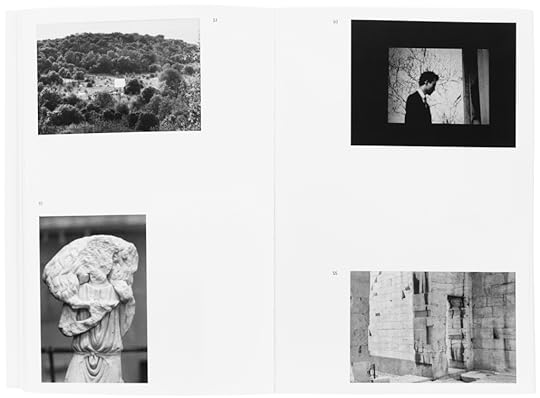 Spread from Jeff Weber, Serial Grey (Roma Publications, 2021)
Spread from Jeff Weber, Serial Grey (Roma Publications, 2021)Serial Grey by Jeff Weber
In recent years, a small but growing cohort of information-obsessed knowledge workers have tried to build “second brains.” By this, they mean the organization of their thoughts with digital archives and note files that will, they hope, help them to find connections between their ideas and “unlock [their] creative potential.” One patron saint of this group is the late German sociologist Niklas Luhmann, whose own repository involved thousands of intricately annotated index cards housed in cabinets.
The fifteen-year practice of the Belgian artist Jeff Weber is characterized, in part, by a search for tools and methods of “unlocking creative potential”—to devise systems that produce photographic images and films. Early in his career, Weber established his own Luhmann-style archive, which he sardonically termed An Attempt at a Personal Epistemology with the Help of a Cardfile as Generative Mechanism (2009–10). “It was meant to form an interactive tool that could mirror the self and that I could work with—or, rather, rely on to create art,” he says. The frustrations of that project put Weber on the path he has followed since. Serial Grey (Roma Publications, 2021), his new book, documents both an exhibition at Carré d’Art–Musée d’art contemporain, Nîmes, and the evolution of his art.
The book is initially forbidding in its seeming austerity: the cover depicts an unprepossessing grid of small squares in varying shades of gray, an image seen in six more variations before you arrive at the table of contents. But persistence is rewarded with the slow disclosure of an idiosyncratic and all-too-human search for connection (it’s a “personal” epistemology, after all).
The heart of Serial Grey is a collection of casual-seeming snapshots in a rich range of moody grays. In them, some figures recur, such as a young woman with short dark hair, alternately posed and unposed as she interacts with others, travels through sunny landscapes, and visits museums. Those galleries provide another theme: snapshots of artworks and objects from ancient cultures, mute testaments to human creativity. Yet other pictures focus on doorways and portals, or render a city roofscape, suggesting untold stories.
Weber made many of these photographs in relation to Kunsthalle Leipzig, an institution-as-artwork he ran out of an apartment from 2014 to 2017. By entering into extended creative dialogue with those he invited to exhibit at the space, Weber made images that are simultaneously records of his subjective experience, of creative processes (his and theirs), and of fulfilling relationships.
After Kunsthalle Leipzig closed, Weber returned to impersonal generative technologies: the patterned grids in the early pages of this book are, in fact, recent photograms resulting from a hacked-together combination of artificial neural networks, torn-open LCD displays, and a traditional photographic enlarger. Such oblique strategies require explanation for their impact to be fully felt. But, as hermetic and aloof as the book can seem, it is both intellectually fertile and, surprisingly, emotional. Serial Grey makes plain that Weber derives meaning from reciprocity, whether the relationship in question is with another person, with a tool, or, above all, with art. —Brian Sholis
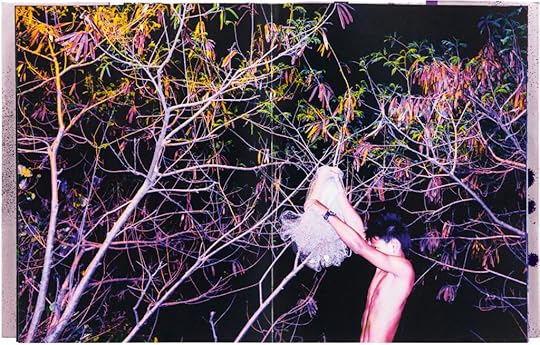 Spread from Arko Datto, Snake Fire (L’Artiere Edizioni, 2021)
Spread from Arko Datto, Snake Fire (L’Artiere Edizioni, 2021)Snake Fire by Arko Datto
Although Arko Datto’s journalistic photographs are firmly grounded in the lived encounters in his native India and other countries across Southeast Asia, his artistic practice is not solely tethered to a truthful representation of his subjects. Reimagined in filters and tints that infuse the frames with striking, saturated hues, Datto’s portraits and landscapes verge on dreamscapes, where illusory, chimerical combinations of light and color come into tangible focus.
In his new book, Snake Fire (L’Artiere Edizioni, 2021), Datto, who is based in Kolkata, continues to expand his constructed world, where reality is reconfigured to generate a trance vision. A compilation of arresting, and at times unsettling, photographs that portray anonymous creatures of the night, derelict urban landscapes of Southeast Asia, and inadvertent collisions between nature and human civilization, the publication features a hundred or so images, taken in Malaysia and Indonesia, printed in full bleed from one page to the next. Here, we see an old man treading along a deserted road with a cadaver of a pig cut in half; a crocodile floating in muddied water; a riverbank inundated with heaps of trash and rubber tires where a dilapidated boat is parked; and a pair of godlike figures carved in stone, on which pieces of fabric and other paraphernalia are attached.
Resisting the grammar of photobooks built around the narrative potential created by the pacing of images with empty spaces in between, Snake Fire opts to submerge the reader in a succession of frames with such acute, rich colors that the images are rendered ethereal. A coat of silver and fluorescent ink sprayed atop numerous pages heightens the surreal aesthetics of Datto’s photographs, allowing each scene to appear differently according to the amount of light on the spread. Perhaps counterintuitively, these postproduction effects dissociate the images from the palette one typically associates with the region, despite the iconography of snake and moth that firmly root the frames in the natural environments of Southeast Asia. Instead, they invoke a fantastical parallel world produced by the layering of a colored filter onto a reality in which Datto’s eerie images could be conjoined to create an ecosystem.
Datto’s documentary work, featured by Time and National Geographic, seeks to inform the spectator of such pressing issues as migration and urbanization as they unfold in South and Southeast Asia. But Snake Fire takes a psychedelic direction, as if in opposition to reportage. Instead of flattening its images into an orderly assortment of discrete moments, Snake Fire offers a collection of hypnotic encounters that simultaneously activate the reader’s sense of sight and touch. In doing so, it disputes the status of photobooks as incomplete, albeit decent, alternatives to prints. As a satisfying counterexample of the genre, Snake Fire lets itself drift as a site of handheld dreams. —Harry C. H. Choi
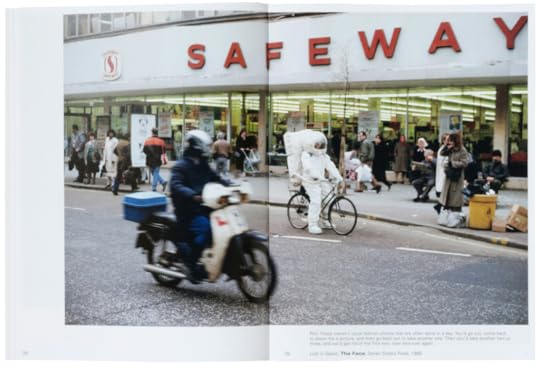 Spread from Nigel Shafran, The Well (Loose Joints, 2022)
Spread from Nigel Shafran, The Well (Loose Joints, 2022)The Well by Nigel Shafran
The British historian Raphael Samuel once noted that consumer society sees the world as a shop window display. Nigel Shafran is a photographer who has lingered long around high street plate glass. It’s easy to call him a fashion photographer, but his engagement with the urban vernacular and his disinterestedness in seeking commercial jobs placed him for many years on the margins of the industry. Yet The Well (Loose Joints, 2022), a newly published survey of Shafran’s work to date, notes the quiet revolution his photography has ushered in. Threaded through a chronological selection of published editorials, portfolio pieces, and outtakes is a conversation—like a series of interconnected captions—between the photographer and his collaborators, including stylists, models, editors, and art directors, recounting projects across a more than thirty-year period.
In one exchange, the stylist Anna Cockburn tells Shafran, “Your work has always celebrated the banal, the things that we don’t clock anymore,” to which he replies, “I like how you use the word clock, it’s like time.” Shafran hones details that become emblematic of a time period and, in turn, of time passed. The changing window displays he’s drawn to are, in their perpetual state of flux, no different from the young people he portrays in their moment of becoming. The subjects of his Teenage Precinct Shoppers (named after Teenage Mutant Ninja Turtles) appear like buds before they open, while their early 1990s tracksuits today appear set in amber.
The Well, edited and designed by Linda van Deursen, charts time as a form of loss: from working in the ’90s for British style magazines such as i-D and The Face, where there was more time, more freedom, but more film to process, to working for international titles in the first decade of the twenty-first century, where the budgets got bigger and the credits got longer, but the possibilities contracted. Shafran’s later images articulate something found, a staging and reenactment of the joyful forms of lived experience, but with models and celebrities now. Bella Hadid appears daredevil cycling, her feet on the saddle, her hands gripping the handlebars, but Shafran shows her posed in the studio with three assistants holding the bike upright. It’s an absurdist play about the everyday, what Samuel described as “theatres of memory.”
In a photograph taken on Baker Street in 1992, a young window cleaner, squeegee in hand, stands on the street looking directly at the lens, his baggy black outfit and slicked-back hair fresh from a night out. It’s only when you notice the streaks running down the right of the frame that you realize Shafran must have been inside the shop to take the image, internalizing his view of the world as a shop window—the boy in that moment the best fashion plate he could ever be. Shafran’s work describes a discontinuous world, but its manufactured heart beats steadily: hopes and desires just as shallow in depth, just as temporary, just as glorious as what lies out for sale. —Alistair O’Neill
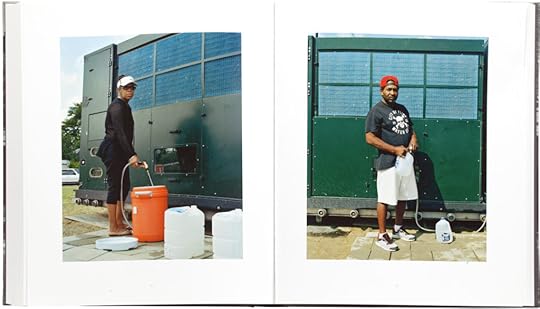 Spread from LaToya Ruby Frazier, Flint Is Family in Three Acts (Steidl and the Gordon Parks Foundation, 2022)
Spread from LaToya Ruby Frazier, Flint Is Family in Three Acts (Steidl and the Gordon Parks Foundation, 2022)Flint Is Family in Three Acts by LaToya Ruby Frazier
LaToya Ruby Frazier’s Flint Is Family in Three Acts (Steidl and the Gordon Parks Foundation, 2022) chronicles how artists and activists—family by blood, choice, and common cause—came together to bring fresh water back to Flint, Michigan, after the city’s catastrophic decision in April 2014 to switch its water supply from a treatment facility to a toxic river. Residents were forced to consume contaminated water that made them sick, with some developing chronic medical conditions as a result. Throughout all of this, Flint’s citizens—predominately Black and economically poor—were still required to pay their water bills. Frazier was initially commissioned by Elle magazine to photograph the man-made crisis, and her project grew from there, culminating in a book coauthored by the Flint activists Shea S. Cobb and Amber N. Hasan; Shea’s father, Douglas R. Smiley; and Flint community members.
Expansive and elegant, with an inviting, textured cover, Flint Is Family is at once monumental and intimate. As with her earlier book The Notion of Family (Aperture, 2016), it involved many participants and a concern for social justice. Frazier described in a panel discussion organized this spring by the Gordon Parks Foundation how relationships and dialogue were essential to the Flint project, including to its editorial process: Frazier and Cobb laid these photographs out on a kitchen table and talked about every detail as if poring over a family album.
The three acts in the title are an organizing principle based on the Bible: Act I begins with a poem by Cobb titled “No Filter,” accompanied by an aerial photograph of Cobb at the center of a bridge over these troubled waters. Act II brings Cobb and her daughter, Zion, to Newton, Mississippi, back to their family land with its fresh springs and horses. Act III pivots to Hasan, who moves to Puerto Rico and meets a man named Moses West who has a solution. With help from Frazier, Hasan and West find the financial support to bring an atmospheric water generator to Flint, providing free and fresh water to all who need it. Frazier and the book’s editor, Michal Raz-Russo, who also contributes an essay, remain thoughtful about the divinity of these intertwining lives and events, down to the typeface used throughout, which comes from the Amplified Holy Bible.
In addition to its Judeo-Christian elements, we can see Flint Is Family through another tradition: the spirit of African American photography. The book crescendos from primarily black-and-white images into colorful, jubilant portraits of residents drawing fresh water from the generator in Flint’s Black business district. The green generator with blue solar panels becomes an open-air studio for Frazier, recalling James VanDerZee’s and Dawoud Bey’s Harlem; Richard Samuel Roberts’s Columbia, South Carolina; and the Black portrait studios that peppered the United States throughout the twentieth century. Her respect for portraiture converges with the rich documentary tradition of Gordon Parks, who himself moved between black- and-white photo-essays and the color portraits seen in Segregation Story to evoke changes in time and tone over the course of a life.
By the end of Flint Is Family, we certainly feel the change. —Jovonna Jones
 Spread from Rafał Milach, Strajk / Strike (Jednostka Gallery, 2021)
Spread from Rafał Milach, Strajk / Strike (Jednostka Gallery, 2021)Strajk / Strike by Rafał Milach
Strajk / Strike (Jednostka Gallery, 2021) presents many photographs the Polish artist-activist Rafał Milach took of people standing on balconies or looking out the windows of Warsaw apartment blocks. These images of figures framed within the gridded structure of residential facades are also a framing device for this record of the Strajk Kobiet (Women’s Strike), the popular uprising in Poland in the last months of 2020 in response to a near-total abortion ban. Spurred by the ruling of a conservative Constitutional Tribunal, the wave of mass protests that continued into early 2021 stood in opposition to the overwhelmingly Catholic country’s right-wing government, which in recent years has rendered the position of women, LGBTQIA, and minorities increasingly perilous.
The protests were a pressing subject for Milach—a member of Magnum Photos whose work is primarily concerned with systemic structures of power and state control—who has since covered the war in Ukraine. Bolstered by essays printed in English and Polish by Aleksandra Bockowska, Karolina Gembara, and Iwona Kurz, the book considers the function images played in the months-long Women’s Strike. What did it mean to photograph the protest, and why does it matter? While the movement’s demands were not met, Strajk / Strike’s tone is vaguely hopeful regarding the way photographs can constitute a call to action and visualize enduring forms of solidarity. Nearly square in format and printed on newsprint, the deep-red, light- weight book bears on its back cover the lightning bolt that became the symbol for the movement. You can almost imagine the bolt itself being brandished as a protest sign, clutched in a hand extending into the air.
And, indeed, Strajk / Strike suggests that images hold a power that can be wielded. In Kurz’s essay, “Snapshots from a Protest: A Coalitional Image,” she broaches the sense of “us” versus “them” that structures much protest photography, in which the contrast between opposing sides of a conflict is often amplified aesthetically by the photojournalist. Milach supplants this binary with a dialogue between photographs of protesters—mostly close-up headshots of young women, many with bright-red eye shadow or face masks embellished with lightning bolts—and photographs of people looking down on the street from their homes. In line with Kurz’s claim that these demonstrations stemmed less from polarization than from an effort to envision a society that made space for multiplicity, Milach’s photographs of the onlookers underscore a sense of ambiguous plurality. Some waved, pasted lightning bolts to their windowpanes, or recorded the procession below with their phones; others peered down ambivalently, perhaps signaling support with their presence. The protests took place as COVID-19 surged in Poland, keeping many people home as they quarantined or avoided risk of infection.
In her text, “Gaze,” Gembara analyzes the posture of these onlookers in terms of the scholar Ariella Azoulay’s theory of photography as a civil contract, dismissing the passivity that can be associated with the medium and situating the act of taking or observing a photograph as something inherently active. Her concluding sentence pithily encapsulates the book’s motivating thrust: “Our seeing, a mutual responsibility.” —Camila McHugh
Related Items
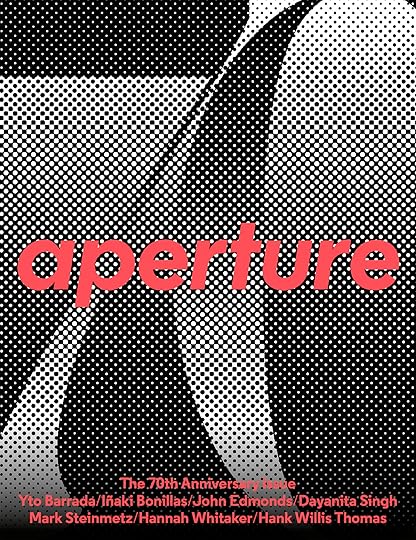
Aperture 248
Shop Now[image error]
Aperture Magazine Subscription
Shop Now[image error]These reviews originally appeared in Aperture, issue 248, “The 70th Anniversary Issue,” in The PhotoBook Review.
November 30, 2022
Ashish Shah’s Languorous Portrait of the Indian Countryside
Uttarakhand is haunted by the ghost of migration. The north Indian state, which borders Nepal, harbors the source of the Ganga River, which is worshipped as a goddess. As the legend goes, Ganga migrated from the heavens to bring salvation to the accursed ancestors of Bhagiratha, the Ikshvaku king after whom she is also named Bhagirathi. Then there are the annual winter migrations of deities to their temporary shelters downhill, which residents mark with music and fanfare.
Lately, however, the state has been grappling with migrations of a different nature that have left vast swaths in districts such as Pauri Garhwal, Tehri Garhwal, and Almora abandoned. According to a 2018 report by the state’s Rural Development and Migration Commission, 734 villages became depopulated between 2011 and 2018, raising the total number of “ghost villages” in Uttarakhand to 1,768. Lack of employment opportunities, road connectivity, and education and health infrastructure are the primary reasons behind the exodus. Unlike the seasonal influx of wage laborers from the neighboring states of Uttar Pradesh and Bihar, the outgoing migrants from Uttarakhand can secure more permanent tenures by virtue of being better educated. Not surprisingly, Pauri Garhwal, the district with the highest literacy rate, is also the most deserted.
 Ashish Shah, Waiting for local transport, 2022
Ashish Shah, Waiting for local transport, 2022  Ashish Shah, A traditional, three-story house that has been shut for decades, Amaldu Village, 2022
Ashish Shah, A traditional, three-story house that has been shut for decades, Amaldu Village, 2022 In 2022, Ashish Shah, a migrant from Uttarakhand’s capital, Dehradun, who has carved himself a niche in Indian fashion photography, returned to his home state to capture life in the ghost villages in Pauri Garhwal. “I was born and grew up in these territories until my early twenties,” Shah said recently. “I am very much a part of the same shift.”
A sense of dereliction and waiting consumes his new series The Last Inhabitants of Pauri (2022). It lingers in doors long-locked, in unused charpoys and buckets, in overgrown houses, and, most of all, in the attitudes adopted by the remnant inhabitants. A sari-clad woman looks on morosely in the wake of her son’s departure for a job somewhere in the plains; the moment seems frozen beyond photographic time. Two women appear amid the drawn-out sigh punctuating a habitual conversation that breaks the routine of chores. Fingers twined and hunched slightly, the woman in pink conveys resignation, while the gaze of her companion interrogates the unexpected presence of the photographer-stranger. Framing her henna-dyed and braided profile is the creeping halo of bottle gourds, which will end up as precious weights in the jholas (cloth bags) of husband, brothers, and sons reporting back from holiday.
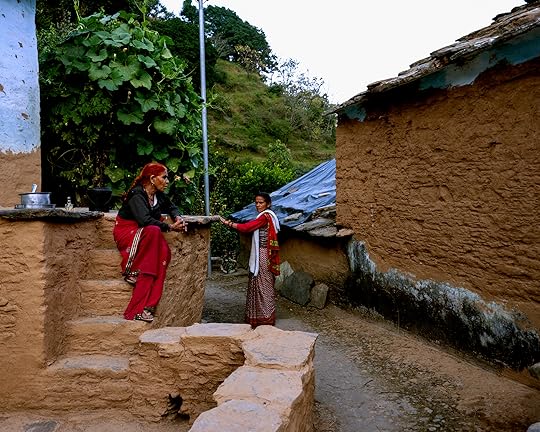
Ashish Shah, Women chatting, Sheela Village, 2022
var container = ''; jQuery('#fl-main-content').find('.fl-row').each(function () { if (jQuery(this).find('.gutenberg-full-width-image-container').length) { container = jQuery(this); } }); if (container.length) { var fullWidthImageContainer = jQuery('.gutenberg-full-width-image-container'); var fullWidthImage = jQuery('.gutenberg-full-width-image img'); var watchFullWidthImage = _.throttle(function() { var containerWidth = Math.abs(jQuery(container).css('width').replace(/\D/g, '')); var containerPaddingLeft = Math.abs(jQuery(container).css('padding-left').replace(/\D/g, '')); var bodyWidth = Math.abs(jQuery('body').css('width').replace(/\D/g, '')); var marginLeft = ((bodyWidth - containerWidth) / 2) + containerPaddingLeft; jQuery(fullWidthImageContainer).css('position', 'relative'); jQuery(fullWidthImageContainer).css('marginLeft', -marginLeft + 'px'); jQuery(fullWidthImageContainer).css('width', bodyWidth + 'px'); jQuery(fullWidthImage).css('width', bodyWidth + 'px'); }, 100); jQuery(window).on('load resize', function() { watchFullWidthImage(); }); }The infrequency of buses and other modes of public transport in Uttarakhand has made anticipation and rest part and parcel of the quotidian choreographies in these remote villages. Shah’s subjects can be seen squatting on their haunches waiting for a bus, as people sometimes do for hours, or catching a breath before resuming their bundling of firewood and roving, or simply loitering on a bench in anticipation of an arrival. Notably, it is his observant exhuming of the repertoire of attitudes and gestures through which the Indian body reposes, coupled with his attention to local complexions, styles, and settings, that has distinguished Shah’s fashion photography.
Related Stories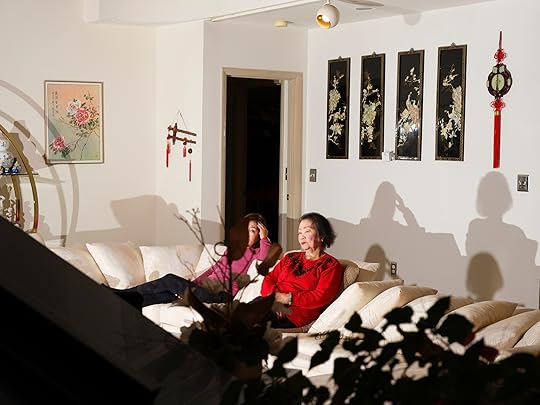 FeaturedThe Radiant Intimacy of Jarod Lew’s Family Portraits
FeaturedThe Radiant Intimacy of Jarod Lew’s Family Portraits
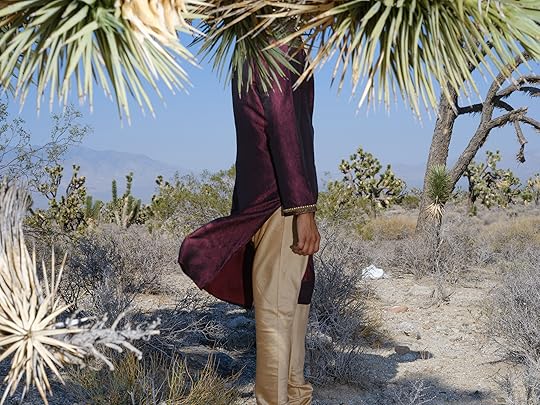 FeaturedThe Anti–Road Trip of an Indian American Photographer
FeaturedThe Anti–Road Trip of an Indian American Photographer
 FeaturedAt Beaches around the World, a Photographer Finds Hope and Home
FeaturedAt Beaches around the World, a Photographer Finds Hope and Home 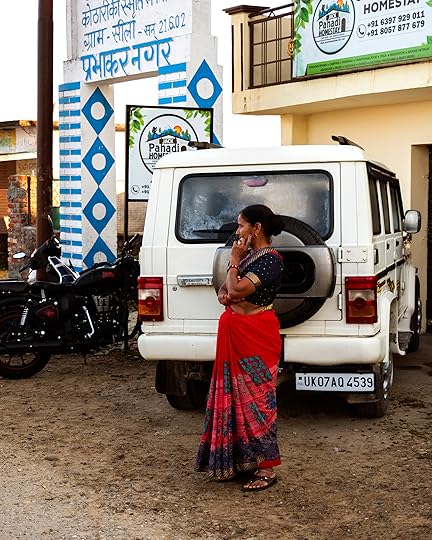 Ashish Shah, A mother watching her son leaving to resume his job in the city , 2022
Ashish Shah, A mother watching her son leaving to resume his job in the city , 2022  Ashish Shah, Still life around a demolished house, 2022
Ashish Shah, Still life around a demolished house, 2022 “Often fashion imagery in India is very alienated from the world it represents,” he says. Commissioned by brands such as Alexander McQueen, Byredo, and Raw Mango, Shah has managed to successfully challenge the prevailing Western conventions that pertain not only to casting but also the choice of setting, framing, and bodily comportment.
While investigating the demographic shifts bedeviling these villages, Shah remains wary of the trap of victimizing narratives. He is conscious about not letting his representations of Garhwali country life and its challenges slide into value judgements about this lifestyle. Occupying the yonder side of migration, Shah recognizes the luxury of playing gully cricket in the middle of the day and indulging in unhurried conversation, to say nothing of the health benefits of daily exercise as well as the consumption of unadulterated food and air. His depictions of backbreaking labor are unfailingly relieved by moments of languor.
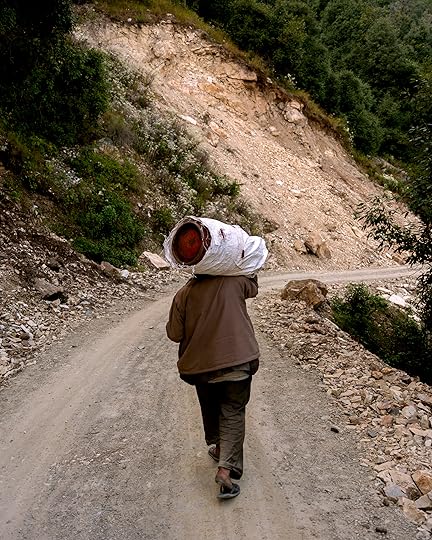 Ashish Shah, A man walking to Baluni Village with a gas gylinder, 2022
Ashish Shah, A man walking to Baluni Village with a gas gylinder, 2022 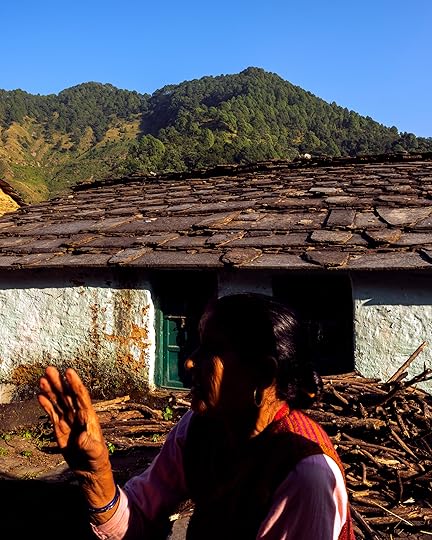 Ashish Shah, After work, a lady basks in the sun, Amaldu Village, 2022
Ashish Shah, After work, a lady basks in the sun, Amaldu Village, 2022 There is an image of a man hauling a gas cylinder, and one of an apple farmer who returned to the village, where he started a polyhouse, a type of greenhouse for sustainable horticulture. “While I came across many villages where the young ones have moved out in search of a different life, Lakhpati Prasad, my local guide, moved back to his village to take care of the ancestral land, striving for a balance in the ecosystem, against the will of his wife and kids who still live in the city,” Shah explains. Elsewhere, one witnesses a house being rebuilt, one of the many to get a new lease on life during the pandemic, which drove migrants out of work and back to their villages. A few have stayed to set up small businesses and are reinventing their former lives with insights gained in cities. In this way, Shah’s series presents two sides of the migrant coin as it settles in the state of Uttarakhand.
Ashish Shah’s photographs were created using a FUJIFILM GFX50SII camera.
 Ashish Shah, Anoop walks approximately five kilometers to school every day, Pokhri village, 2022
Ashish Shah, Anoop walks approximately five kilometers to school every day, Pokhri village, 2022 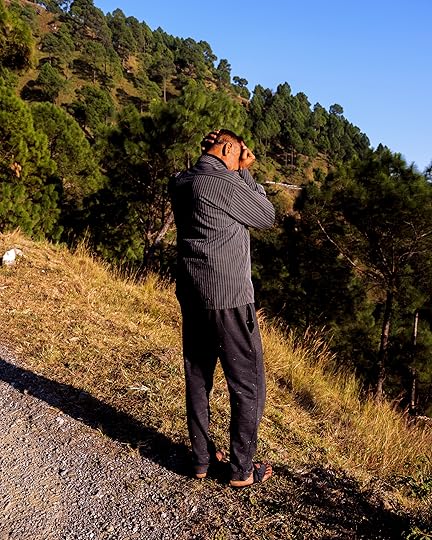 Ashish Shah, Lakhpati Prasad left his job in the city and moved to his village to look after his ancestral land, 2022
Ashish Shah, Lakhpati Prasad left his job in the city and moved to his village to look after his ancestral land, 2022  Ashish Shah, Redevelopment site on the way to Pauri, 2022
Ashish Shah, Redevelopment site on the way to Pauri, 2022 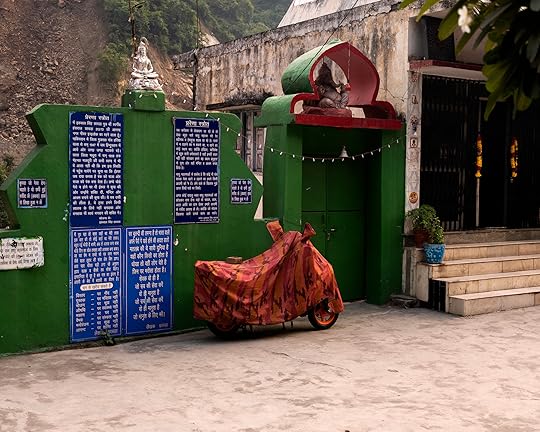 Ashish Shah, Motorbike parked outside a temple, 2022
Ashish Shah, Motorbike parked outside a temple, 2022 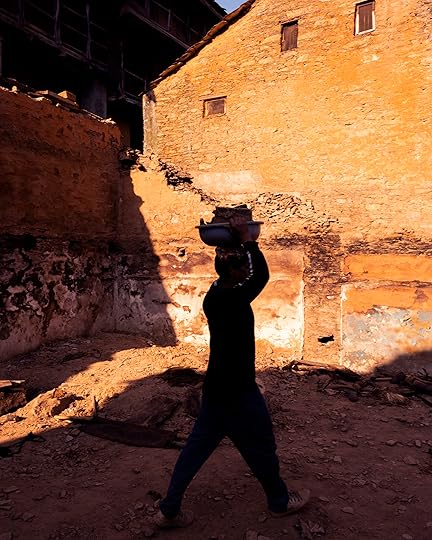 Ashish Shah, A house being demolished, Amaldu Village, 2022
Ashish Shah, A house being demolished, Amaldu Village, 2022 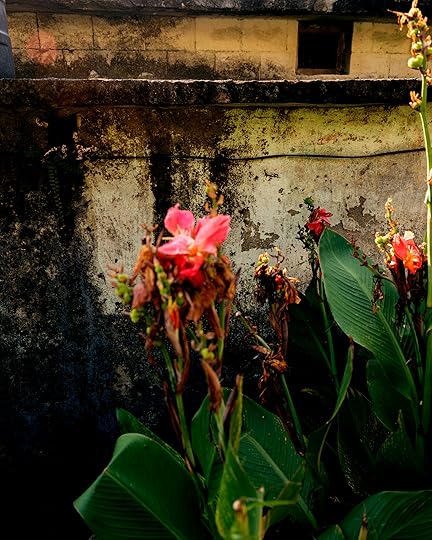 Ashish Shah, Devkali blooming in the backyard of an abandoned house, Kothar Village, 2022
Ashish Shah, Devkali blooming in the backyard of an abandoned house, Kothar Village, 2022 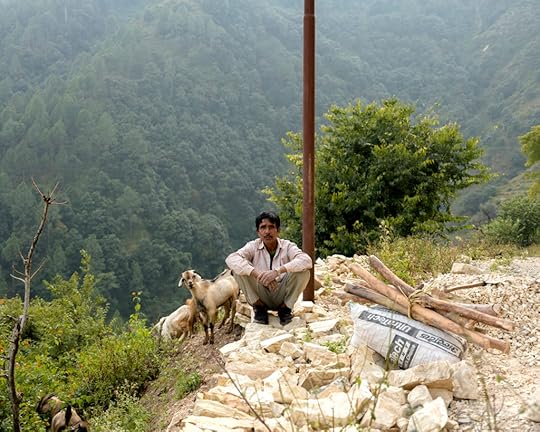 Ashish Shah, A local from Shiela village taking care of his cattle, 2022
Ashish Shah, A local from Shiela village taking care of his cattle, 2022 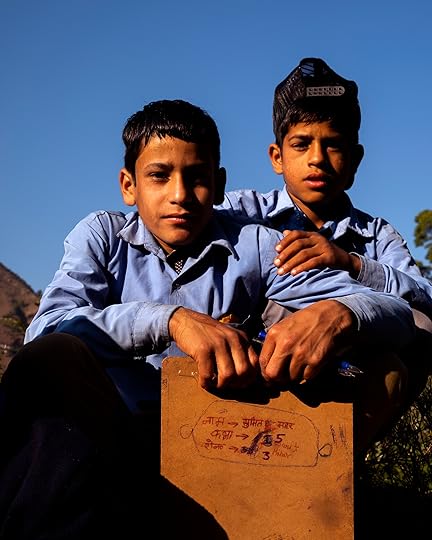 Ashish Shah, Sumit and his friend after exams, 2022
Ashish Shah, Sumit and his friend after exams, 2022  Ashish Shah, Signage of the Prime Minister Road planning on the way to Kothar, 2022
Ashish Shah, Signage of the Prime Minister Road planning on the way to Kothar, 2022 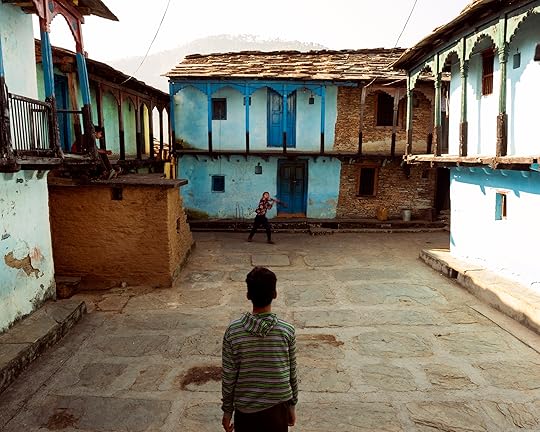 Ashish Shah, Kids playing cricket in the courtyard that used to be the village council of Kothar, 2022
Ashish Shah, Kids playing cricket in the courtyard that used to be the village council of Kothar, 2022 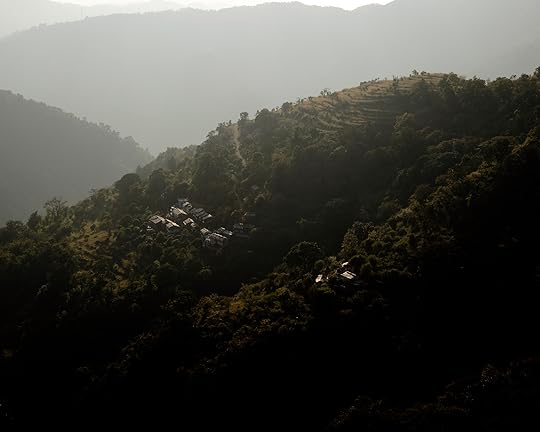 Ashish Shah, View of Amaldu and other ghost villages, 2022
Ashish Shah, View of Amaldu and other ghost villages, 2022All photographs from the series The Last Inhabitants of Pauri, 2022, for Aperture
November 23, 2022
Aperture’s 2022 Holiday Gift Guide
From best-selling photobooks The New Black Vanguard and Photo No-Nos; to monographs by Wendy Red Star, Tom Sandberg, and Deana Lawson; to essay and activity books for all ages—we’ve rounded up titles for everyone on your list.
Must-Haves for Photo Lovers

Aperture magazine subscription
Leading the conversation on contemporary photography with thought-provoking commentary and visually immersive portfolios, Aperture is required reading for everyone seriously interested in photography. With thematic issues like “Vision & Justice,” “Latinx,” and “New York,” and guest edited editions by Alec Soth, Wendy Red Star, Wolfgang Tillmans, and more, Aperture has been the essential guide to photography since 1952.

The New Black Vanguard: Photography between Art and Fashion
In The New Black Vanguard, curator and critic Antwaun Sargent addresses a radical transformation taking place in art and fashion today, highlighting the work of fifteen contemporary Black photographers rethinking the possibilities of representation.

Diane Arbus’s frank treatment of her subjects and faith in the intrinsic power of the medium have produced photographs that are often shocking in their purity and steadfast celebration of things as they are. This year, Aperture released Diane Arbus Revelations on the fiftieth anniversary of Arbus’s posthumous 1972 retrospective at the Museum of Modern Art and the simultaneous publication of Diane Arbus: An Aperture Monograph. Revelations explores the origins, scope, and aspirations of Arbus’s wholly original vision. Featuring two hundred full-page duotones of Arbus’s photographs spanning her entire career, the volume presents many of her lesser-known or previously unpublished photographs in the context of the iconic images—revealing a subtle yet persistent view of the world.
Give the Gift of Inspiration
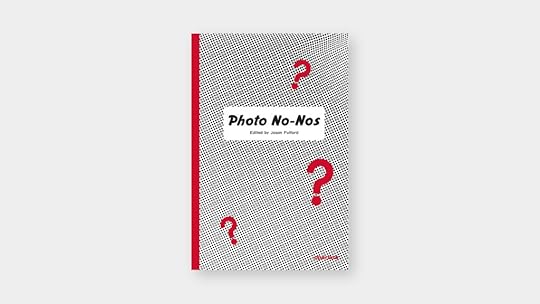
Photo No-Nos: Meditations on What Not to Photograph
What is a “photo no-no”? Photographers often have unwritten lists of subjects they tell themselves not to shoot—things that are cliché, exploitative, derivative, sometimes even arbitrary. Edited by Jason Fulford, this volume brings together ideas, stories, and anecdotes from over two hundred photographers and photography professionals. Not a strict guide, but a series of meditations on “bad” pictures, Photo No-Nos covers a wide range of topics, from sunsets and roses to issues of colonialism, stereotypes, and social responsibility—offering a timely and thoughtful resource on what photographers consider to be off-limits, and how they have contended with their own self-imposed rules without being paralyzed by them.

Aperture Conversations: 1985 to the Present
What led Stephen Shore to work with color? Why was Sophie Calle accused of stealing Johannes Vermeer’s The Concert? Aperture Conversations presents a selection of interviews pulled from Aperture’s publishing history, highlighting critical dialogue between esteemed photographers and artists, critics, curators, and editors since 1985.
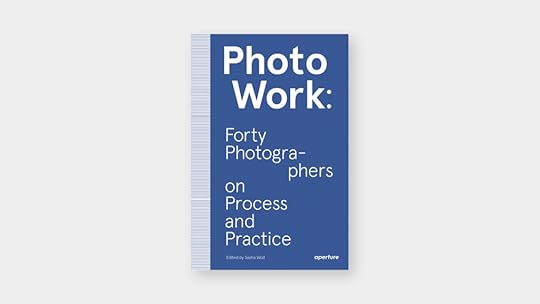
PhotoWork: Forty Photographers on Process and Practice
How does a photographic project or series evolve? How important are “style” and “genre”? What comes first—the photographs or a concept? PhotoWork is a collection of interviews by forty photographers about their approaches to making photographs and a sustained a body of work. Structured as a Proust-like questionnaire, editor Sasha Wolf’s interviews provide essential insights and advice from both emerging and established photographers—including LaToya Ruby Frazier, Todd Hido, Rinko Kawauchi, Alec Soth, and more—while also revealing that there is no single path in photography.
Contemporary Classics
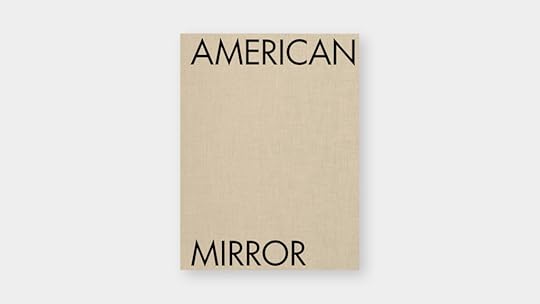
Philip Montgomery: American Mirror
Through his intimate, powerful reporting and signature black-and-white style, Philip Montgomery reveals the fault lines of American society—from police violence and the opioid addiction crisis, to the COVID-19 pandemic and demonstrations in support of Black lives. American Mirror is the first monograph by the award-winning photographer, distilling his vision through seventy-one iconic images. Like Dorothea Lange and Walker Evans before him, Montgomery has made an unforgettable testament to a nation at a crossroads.
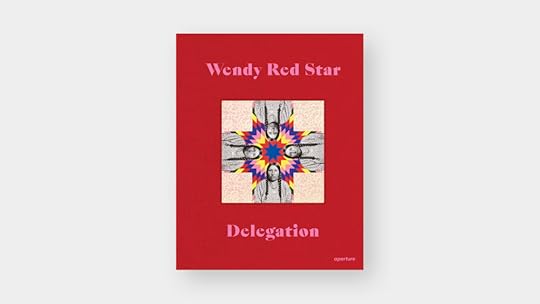
In her dynamic photographs, Wendy Red Star recasts historical narratives with wit, candor, and a feminist, Indigenous perspective. Delegation is the first comprehensive monograph by Red Star (Apsáalooke/Crow), centering Native American life and material culture through the artist’s imaginative self-portraiture, vivid collages, archival interventions, and site-specific installations. Whether referencing nineteenth-century Crow leaders or 1980s pulp fiction, museum collections or family pictures, she constantly questions the role of the photographer in shaping Indigenous representation. Delegation is a spirited testament to the intricacy of Red Star’s influential practice, gleaning from elements of Native American culture to evoke a vision of today’s world and what the future might bring.
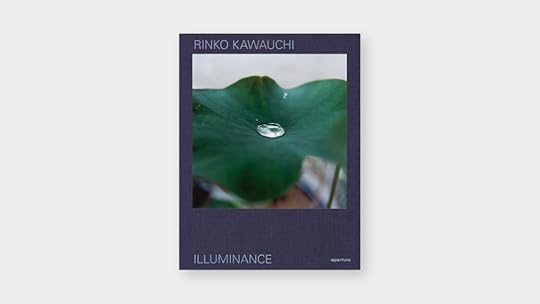
Rinko Kawauchi: Illuminance (Tenth Anniversary Edition)
Ten years after its original publication, Aperture republishes Rinko Kawauchi’s beloved volume Illuminance. Through her images of keenly observed gestures and details, Kawauchi reveals the mysterious and beautiful realm at the edge of the everyday world. As Kawauchi describes, “I want imagination in the photographs—a photograph is like a prologue. You wonder, ‘What’s going on?’ You feel something is going to happen.” This new edition of Illuminance retains the photographer’s original sequence, alongside texts by David Chandler, Lesley A. Martin, and Masatake Shinohara.

Deana Lawson: An Aperture Monograph
Over the last ten years, Deana Lawson has portrayed the personal and the powerful in her large-scale, dramatic portraits of people in the US, the Caribbean, and Africa. One of the most compelling photographers working today, Lawson’s Aperture Monograph is the long-awaited first photobook by the visionary artist. “Outside a Lawson portrait you might be working three jobs, just keeping your head above water, struggling,” writes Zadie Smith in the book’s essay. “But inside her frame you are beautiful, imperious, unbroken, unfallen.”
Visions in Black & White

In a signature, modulating gray scale, the late Norwegian photographer Tom Sandberg spent decades rendering the shapes and forms of everyday life in his exacting vision. From dark abstractions of asphalt and sea, to the hard edges of an automobile or curved tunnel, to anonymous figures cast in shadow, Sandberg creates subtle yet transformative studies of stillness that radiate mystery. A perfectionist in the darkroom, Sandberg was acutely sensitive to the rich spectrum of black and white, and his handmade prints project a powerful physical presence. Tom Sandberg: Photographs is the first major publication dedicated to one of Norway’s most important photographers.

Graciela Iturbide on Dreams, Symbols, and Imagination
Known for her portraits and landscapes imbued with poetic ambiguity, Graciela Iturbide’s photographs employ a deeply personal vision, all while reflecting her subjects’ rich cultural backgrounds. In the latest volume of Aperture’s Photography Workshop Series, Iturbide shares insights into her creative process and inspirations—discussing a wide range of issues from the importance of surprise, to recognizing what speaks to you as an artist, to capturing symbolism and meaning in the everyday.

American Silence: The Photographs of Robert Adams
For fifty years, Robert Adams has made compelling, provocative, and highly influential photographs that show us the wonder and fragility of the American landscape, its inherent beauty, and the inadequacy of our response to it. American Silence features over 175 works from Adams’s career photographing throughout Colorado, California, and Oregon—capturing suburban sprawl, strip malls, highways, homes, and the land. By examining the artist’s act of looking at the world around him, this volume showcases the almost palpable silence of his photographs.
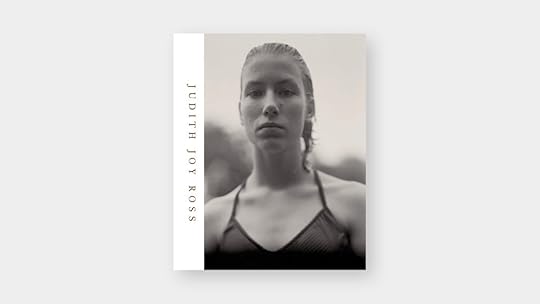
Judith Joy Ross: Photographs 1978–2015
The work of Judith Joy Ross marks a watershed in the lineage of the photographic portrait. Her pictures—unpretentious, quietly penetrating, startling in their transparency—consistently achieve the capacity to glimpse the past, present, and perhaps even the future of the individuals who stand before her lens. Adolescents swim at a local municipal park, ordinary people work and play—all are incisively rendered with equal tenderness in Ross’s black-and-white, large-format portraits. Judith Joy Ross: Photographs 1978–2015 is an illuminating retrospective that explores the life and career of a revered American photographer, illustrated by two hundred of her images, many never before seen or published.
Pioneering Visions
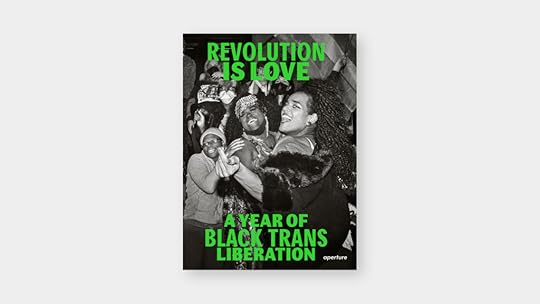
Revolution Is Love: A Year of Black Trans Liberation
In June 2020, activists Qween Jean and Joela Rivera returned to the historic Stonewall Inn—site of the 1969 riots that launched the modern gay rights movement—where they initiated weekly actions known thereafter as the Stonewall Protests. Over the following year, the protests brought together thousands of people across communities and social movements to gather in solidarity, resistance, and communion. A powerful and celebratory visual record of New York City’s contemporary activist movement, Revolution Is Love gathers work by twenty-four photographers alongside texts by Qween Jean, Joela Rivera, Mikelle Street, and Raquel Willis—creating a moving testament to the enduring power of photography in activism, advocacy, and community.
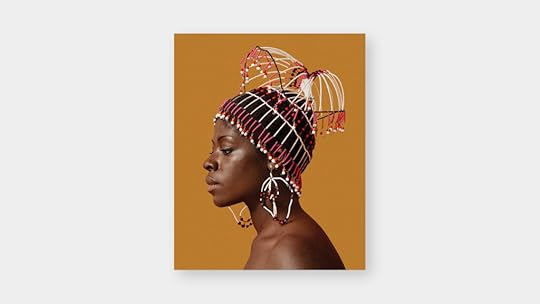
Kwame Brathwaite: Black Is Beautiful
Kwame Brathwaite’s photographs from the ’50s and ’60s transformed how we define Blackness. Using his photography to popularize the slogan “Black Is Beautiful,” Brathwaite challenged mainstream beauty standards of the time. Born in Brooklyn and part of the second-wave Harlem Renaissance, Brathwaite and his brother Elombe were responsible for creating the African Jazz Arts Society and Studios (AJASS) and the Grandassa Models. Until now, Brathwaite has been underrecognized, and Black Is Beautiful is the first-ever monograph dedicated to his remarkable career.
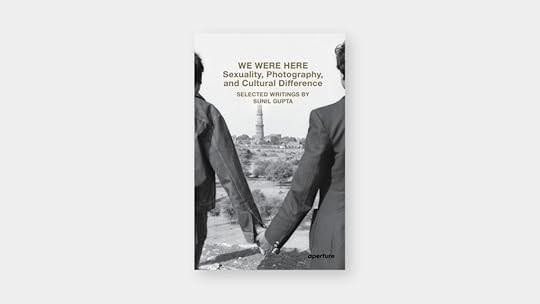
We Were Here: Sexuality, Photography, and Cultural Difference
We Were Here: Sexuality, Photography, and Cultural Difference offers an unparalleled firsthand account of the influential photographer and curator Sunil Gupta’s writing and critical inquiry since the 1970s. From writings on homosexuality in Indian cities, to the Black Arts Movement, to key figures such as Joy Gregory and Robert Mapplethorpe, Gupta foregrounds the power of cultural activism in the politically fraught contexts of London and Delhi—and illuminates the essential connections between queer migration and self-discovery. Continually questioning given forms of identity, Gupta offers artists and curators multiple strategies of resistance, carving out space for new ways of imagining what it might mean to live, love, and create.
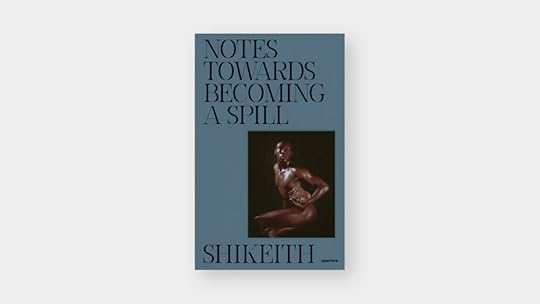
Shikeith: Notes towards Becoming a Spill
In his striking studio portraits, multimedia artist Shikeith envisions his Black male subjects as they inhabit various states of meditation, prayer, and ecstasy. Brought together in the artist’s first monograph, Notes towards Becoming a Spill features seventy photographs alongside texts by Ashon T. Crawley. In this revelatory volume, Shikeith redefines the idea of sacred space and positions a queer ethic identified by its investment in vulnerability, tenderness, and joy.

Zora J Murff: True Colors (or, Affirmations in a Crisis)
Zora J Murff’s photographs construct an incisive, autobiographic retelling of the struggles and epiphanies of a young Black artist working to make space for himself and his community. Often contextualizing his own photographs with found or appropriated images alongside texts, Murff examines the act of remembering and politics of self. Nuanced, challenging, and inspiring, True Colors (or, Affirmations in a Crisis) is a must-have monograph by a rising and standout artist.
For the Design Lover
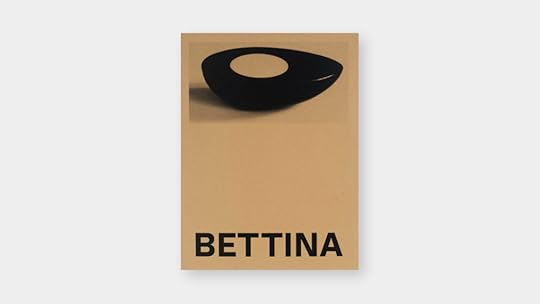
Bettina Grossman’s wildly interdisciplinary practice spanned photography, sculpture, textile, cinema, drawing, and more—and pushed the photographic medium to and beyond its limits. An eccentric personality fully dedicated to her art, Bettina lived in the famous Chelsea Hotel from 1968 until her death in late 2021. In her tiny studio, she produced and accumulated a considerable body of work, incorporating strategies of chance and the abstraction of everyday form through repetition and seriality. Until now, her work has remained largely unseen and unpublished—Bettina is the first monograph to showcase the work of his unsung artist.

Viviane Sassen: Venus & Mercury
In 2018, Viviane Sassen was invited by Versailles to make a series of photographs throughout its vast grounds. For six months, she was given free rein, often after official hours when the buildings were empty, to wander and photograph the palace’s extravagant gardens, gilded baroque interiors, and even Marie Antoinette’s private correspondence. Drawn to the bodies represented in the palace’s many marble statues, Sassen created hybrid forms that play with notions of sexuality and gender, calling to mind traditions of Surrealist art and the work of figures such as Hans Bellmer. Brought together in a new limited-edition book crafted by the iconic designer Irma Boom, Venus & Mercury offers a fresh vision of the storied palace—and all its beauty, melancholy, and intrigue.

David Benjamin Sherry: Pink Genesis
With his mesmerizing analog photograms, David Benjamin Sherry melds queer history, abstraction, and darkroom magic. Born out of what Sherry has called the “transformative potential of the darkroom,” each of his large-scale, cameraless color photograms are laboriously made by hand in the darkroom. Using cardboard masks to create geometric forms and incorporating his own body into the images, Sherry actively references histories of photography—while also thinking through the intersections of identity, form, and the hypnotic power of extreme color. Pink Genesis collects twenty-nine one-of-a-kind works that delight in the pleasures of form and color.
Children’s Activity and Educational Books

The Colors We Share by Angélica Dass
Inspired by her family tree, Angélica Dass—a Brazilian artist of African, European, and Native American descent—began creating portraits of people from all over the world against backgrounds that match their skin tones. Brought together in a book made for young readers, The Colors We Share celebrates the diverse beauty of human skin, while also considering concepts of race and the limited categories we use to describe each other.
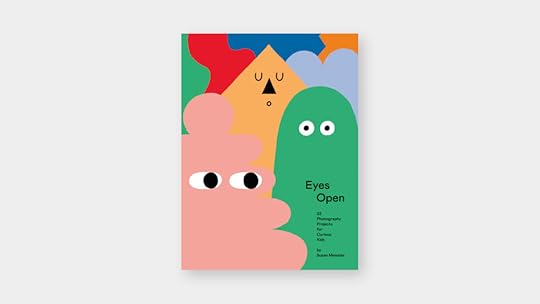
Eyes Open: 23 Photography Projects for Curious Kids
Compiled by Susan Meiselas, Eyes Open is a sourcebook of photography ideas for kids to engage with the world through the camera. Broken into chapters ranging from “Alphabetography” to “Light,” “Movement,” “Neighborhood,” and more, each idea starts with a prompt, illustrated with pictures by students from around the world, and followed by the words and images of artists who share their ways of seeing. Playful and meaningful, this book is for young would-be photographers and those interested in expressing themselves creatively.

Seeing Things by Joel Meyerowitz
Seeing Things is a wonderful introduction to photography that asks how photographers transform ordinary things into meaningful moments. Joel Meyerowitz introduces young readers to the power and magic of photography, exploring key concepts in the medium—from light and gesture to composition—through the work of famous photographers such as William Eggleston, Helen Levitt, Mary Ellen Mark, and Martin Parr.
For the Collector
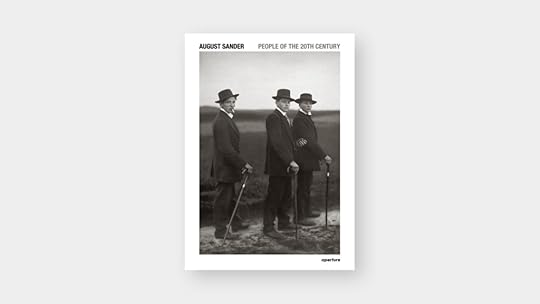
August Sander: People of the 20th Century
A landmark in the history of modern art, People of the 20th Century presents the fullest expression of August Sander’s lifelong work: a monumental endeavor to amass an archive of twentieth-century humanity through a cross-section of German culture. In the 1920s, Sander began to photograph subjects from all walks of life—documenting bankers and boxers, soldiers and circus performers, farmers and families. Sander’s photographs, remarkable for their unflinching realism, provide a powerful social mirror of Germany between the world wars. People of the 20th Century brings together this long out-of-print compendium in an all-in-one volume featuring over six hundred photographs in the more comprehensive iteration of Sander’s still-essential vision.
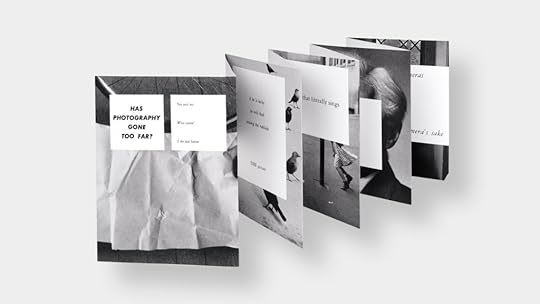
Aperture “70th Anniversary” Limited Editions: Iñaki Bonillas
For Aperture’s “70th Anniversary” issue, seven photographers were invited to consider a single issue, article, idea, or even omission, from a decade of the magazine’s history to create an original commission. Diving deep into Aperture’s first decade of publishing—the 1950s, an era before photography had cemented its status as an art form—Iñaki Bonillas was struck by how the magazine endeavored to make the case for the richness, complexity, and expressive possibilities of the medium. Bringing together iconic images and texts from the era, Bonillas created a series of narrative collages. This limited edition brings to life Bonilla’s “70th Anniversary” portfolio in a special accordion book format.
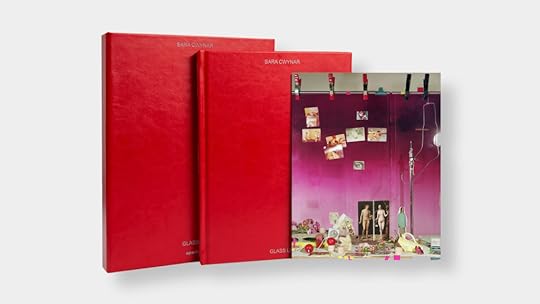
Sara Cwynar: Glass Life (Limited-Edition Box Set)
Sara Cwynar’s multilayered portraits are an investigation of color and image-driven consumer culture. Working in her studio, Cwynar collects, arranges, and archives eBay purchases in visually complex photographs that examine how images circulate online, as well as how the lives and purposes of both physical objects and their likenesses change over time. This special limited-edition box set features a differentiated version of Cwynar’s debut monograph, Glass Life, accompanied by a signed print from the artist.
Shop Aperture’s Holiday Sale for 30% off photobooks, magazines, and prints.
November 18, 2022
Are the Women Photographers of Magnum Getting “Close Enough”?
A girl stands grinning down at the camera, her lilac hijab lifted by the wind like a sail. There is a playful, daring expression on her out-of-focus face, both knowing and open to all that is not known. Faces framed by windows look out from the building behind her: expectant, joyous, watchful, solidary. In this fantasy of an all-girl world—not segregated, but sought out—one might be as free as the foregrounded girl looks, blurred with her own becoming.
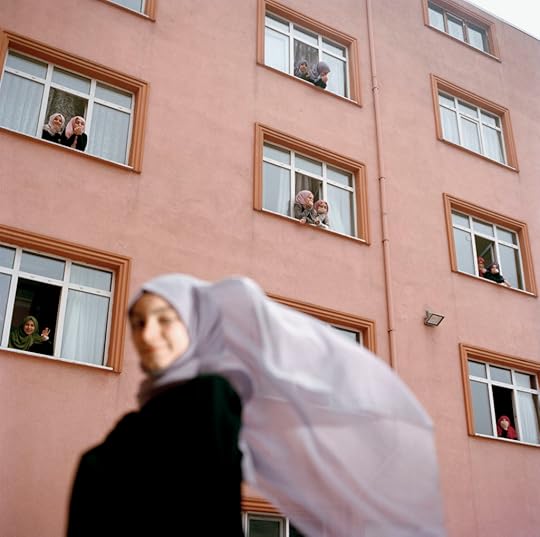 Sabiha Çimen, A student who left school mid-term waits for her father to pick her up, Istanbul, Turkey, 2018
Sabiha Çimen, A student who left school mid-term waits for her father to pick her up, Istanbul, Turkey, 2018 © the artist/Magnum Photos
Sabiha Çimen’s 2018 image of a girl after her midterm exams appears in Close Enough: New Perspectives from 12 Women Photographers of Magnum at the International Center for Photography (ICP), and it stayed with me long after leaving the exhibition, which opened in September of this year, the photography cooperative’s seventy-fifth anniversary. Magnum was cofounded in 1947 by photographers Henri Cartier-Bresson, David “Chim” Seymour, George Rodger, and Robert Capa, who famously said, “If your pictures aren’t good enough, you’re not close enough.” Three quarters of a century later, the collective is still often associated with the masculine milieu of its origins.
As early as 1999, efforts to complicate this perception launched with Magna Brava: Magnum’s Women Photographers, a catalog and exhibition organized by Eve Arnold, the first woman to become a full Magnum member in 1957. It also included the work of Martine Franck, Susan Meiselas, Inge Morath, and Marilyn Silverstone. In 2018, Meiselas organized the group exhibition Magna Brava Ongoing to showcase the photography of a new generation of Magnum women.
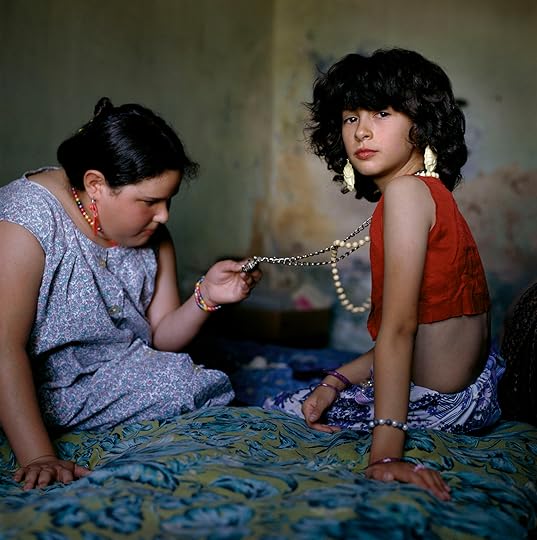 Alessandra Sanguinetti, The Necklace, from The Adventures of Guille and Belinda, 1999
Alessandra Sanguinetti, The Necklace, from The Adventures of Guille and Belinda, 1999© the artist/Magnum Photos
Others have recently called for institutional accountability against sexual harassment and abuse of power, or engaged critically with the collective’s history. Nadya Bair’s The Decisive Network: Magnum Photos and the Postwar Image Market (2020) makes a case for the collaborative network of women—sales agents, writers, editors, publishers, and spouses—essential to the success and impact of the predominantly male collective. Two lesser-known cofounders of Magnum were, in fact, women: Rita Vandivert, the first president and head of the New York office, and Maria Eisner, head of the Paris office.
“I wish for a time when we no longer need to have this conversation,” Bieke Depoorter has said; her work is featured in both Close Enough and Ongoing. The ongoingness of the issue can indeed madden, and there is much to be seen beyond the binary. We are not yet at Depoorter’s wished-for time—certainly not in the US, as celebrities tell us “time’s up” just before abortion protections are lifted, and we are left to self-manage our own human rights.
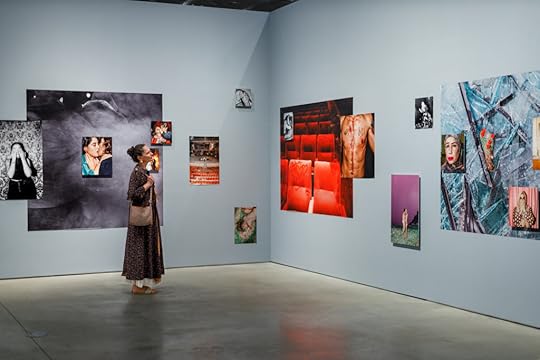 Installation view of Close Enough: New Perspectives from 12 Women Photographers of Magnum, International Center for Photography, New York, 2022, with works by Myriam Boulos. Photograph by Scott Rudd Events
Installation view of Close Enough: New Perspectives from 12 Women Photographers of Magnum, International Center for Photography, New York, 2022, with works by Myriam Boulos. Photograph by Scott Rudd EventsThe twelve photographers “move and challenge the photography collective’s boundaries,” curator Charlotte Cotton writes in Close Enough’s introductory wall text, “deepening Magnum’s anchoring of the photographic quest to take account of human experience and survival. In uniquely personal ways, the contributing photographers negotiate gaining access, holding their bearings, and moving deeper in relation to human subjects and experiences.” Access, bearing, relation, and humanity being the language of reproductive rights as much as the photographic quest, I noted as I entered the show how my view might be colored by our particular national horrors, though the majority of images were taken outside the US. Close Enough manages to keep in focus a complex contemporary global web while individual works pulse with intimacy; that the photographers are women is both palpable and insignificant.
In the first room, scenes of girlhood stir. Çimen’s series Hafız (2017–20), the title meaning someone who has memorized the Koran, grows out of the artist’s drive to seek her younger self at a Turkish Koran school like the one she once attended. “I was struck by the girls who didn’t seem to care about how they looked in comparison to the so-called beauty standards set by social media,” Çimen writes, remarking on their “agency” and “resolute rebelliousness” in first person wall text (which accompanies each photographer’s work). Electric-pink smoke plumes before three girls all in black, powerful and partially obscured, like sorcerers. One girl with disarming eyes and cheeks pocked with acne scars brings fingers with chipped nail polish delicately to her forehead; another, flipping her eyelids inside-out with curled fingers, is vampiric in chiaroscuro.
 Newsha Tavakolian, Still from For the Sake of Calmness, 2020
Newsha Tavakolian, Still from For the Sake of Calmness, 2020© the artist/Magnum Photos
Nearby is Newsha Tavakolian’s film For the Sake of Calmness (2020), a strange and wonderful meditation on premenstrual syndrome and Iran’s highest volcanic peak. Tavakolian explains the analogy between the discomfiting porousness PMS creates between one’s body and the world, and the state of a country and a volcano—inactive, but always with the potential to erupt. Alessandra Sanguinetti’s images of her “long-term collaborators” Guille and Belinda, whom she’s photographed from ages nine to thirty-three, in rural Argentina, are time capsules full of personality, together a study in time’s passage.
Olivia Arthur’s installation of black-and-white photographs from 2016 to 2022 shows a world where gender can be fluid or queer, where sexuality, technology, intimacy or a lack thereof, and all the strangeness of having a body is taken head-on in a sculptural hodge-podge—what the artist calls a “mind map.” Myriam Boulos’s photographs taken between 2012 and 2022, including around Lebanon’s 2019 revolution, are a vivid punk-rock tapestry, a reclamation of “our streets and our bodies … and stories,” as Boulos puts it, where tongues meet in close-up, tattoos mingle with blood, and queer intimacy is luminous.
 Carolyn Drake, Jackie and Leah, from Knit Club, 2018
Carolyn Drake, Jackie and Leah, from Knit Club, 2018© the artist/Magnum Photos
 Olivia Arthur, Thea’s Double Tooth, 2022
Olivia Arthur, Thea’s Double Tooth, 2022© the artist/Magnum Photos
Carolyn Drake’s Knit Club (2012–20), a collaboration with Mississippi women to explore questions of “womanhood and motherhood” and possibility beyond “the control of the patriarchal system,” calls for close inspection. A wood-framed arrangement of images resembling a religious mantel hangs across from Arthur’s installation. It is a beautiful world these women create, but not one without darkness. A woman with a papier-mâché face holds a turned-away child; a haunting figure in a pink nightie and eagle head brings to mind a Hafız girl wearing a gorilla mask, grasping a friend’s chin, playing with threat.
Hannah Price trains her lens on the men of Philadelphia in her series The City of Brotherly Love (2009–12). “As I commuted to and from work, up to five times a day I’d be thrown off guard by a man catcalling in my direction,” Price writes. “The fact that I responded at all was a surprise to them, and I’d turn the conversation away from attraction and ask if I could photograph them.” Perhaps it is surprise that renders the faces of these men notably open. Some seem shy or defensive, others humorous or inquisitive, as if trying to assert something but aware of a shifted dynamic; now they are seen. And to some, perhaps, it is an interesting proposition.
 Hannah Price, Everyday After Work, West Philly, from City of Brotherly Love, 2010
Hannah Price, Everyday After Work, West Philly, from City of Brotherly Love, 2010 © the artist
As I moved upstairs, I considered what subtle play with power and the lens can reveal. Over the last near decade, ICP has largely worked with curators in residence rather than staffing curators. The prolific writer and curator Charlotte Cotton is one such resident, as is Cynthia Young, who curated the other show now on view: a detailed account of Robert Capa’s 1938 Spanish Civil War photobook, Death in the Making. (ICP was originally founded by Capa’s brother, Magnum member Cornell Capa, in 1974; Mark Lubell, formerly the New York head of Magnum, was director from 2013–21.)
Close Enough manages to keep in focus a complex contemporary global web while individual works pulse with intimacy; that the photographers are women is both palpable and insignificant.
As Magnum has opened itself over the years to a wider range of photography, the number of women in its roster has increased. Yet, today, of the ninety-eight members, only sixteen are women—to say nothing of race. (Two former women members have resigned; others have not proceeded through the stages of what the collective calls a “rigorous process” to attain full membership.) Price, whose Brotherly Love series is on view at ICP, is in fact no longer with Magnum. That Close Enough includes the work of exciting, young, international photographers may seem a return to ICP’s tradition of innovative and globally diverse triennials. Or, yet another Magnum show may signal a lack of vision, or a bid for positive PR for the collective.
Gender inequality is particularly notorious in photography; it also pervades the world. The premise of Close Enough: New Perspectives from 12 Women Photographers of Magnum and the title’s accidental implication—here, Capa’s challenge that photographers get “close enough” sounds more like shrugged-off defeat—tells of how far not only Magnum but many storied institutions are from practicing what they preach in support of “new perspectives.”
 Cristina de Middel, Adeshina, 25 years, Lagos, 2018
Cristina de Middel, Adeshina, 25 years, Lagos, 2018© the artist/Magnum Photos
Upstairs, in a darkly lit space, Bieke Depoorter and Cristina de Middel share a wall, their images, which both deal with sex work, displayed back-to-back. Depoorter’s photos, videos, and letters document her multiyear collaboration with Agata Kay, whose presence is captivating. Depoorter’s moving images—of Kay dancing, alone and with a client; of the two women singing together on a roadside—hold heat. In a 2019 missive to her collaborator, Depoorter interrogates the boundaries of their relationship, noting her confusion and admitting, in another letter, to not selecting the images “where I seem drunk . . . where we kissed . . . I performed too.” Agata writes, “Maybe you look for yourself while looking for me.”
The ninety-nine photographs and testimonials of men and one woman who responded to de Middel’s open call for clients of sex workers—from Rio de Janeiro, Havana, Mexico City, Paris, Bangkok, Los Angeles, Lagos, Kabul, Amsterdam, and Mumbai, between 2015 and 2022—overwhelm the wall with their sheer volume and the power of their exposure. In her own text, de Middel describes her aims as a witness, but also her experience as a woman and survivor of sexual abuse.
 Nanna Heitmann, Police man at a pro-Novalny Protest, 2022
Nanna Heitmann, Police man at a pro-Novalny Protest, 2022© the artist/Magnum Photos
Displayed on either hallway, stretching out like balconies over the main exhibition floor, are photos by Nanna Heitmann and Lua Ribeira. Heitmann traces the escalating Russian invasion of Ukraine, centering Russian television propaganda and witnessing the last public protests in Moscow in February 2022; the vacant blue eye of one Russian policeman pierces, visible through a hole in his protective head gear. Ribeira’s stark, sun-soaked portraits picture young people in the trap and drill music scene “across the Spanish territory,” which she herself is close to and believes is “resonating globally for a reason.”
 Lua Ribeira, Almeria, Spain, from Agony in the Garden, 2021
Lua Ribeira, Almeria, Spain, from Agony in the Garden, 2021© the artist/Magnum Photos
Finally, Meiselas’s A Room of Their Own (2015–16) fills ICP’s two-story wall near windows overlooking Essex Street. It is a collaborative work comprised of photographs and video from shelters, as well as testimonies and artwork by survivors of domestic abuse in the UK. The odd, inventive arrangement of images throughout the show—some on folding screens or accordions, some displayed architecturally, and including that two-story wall—must speak to the particular ways the artists want their work seen. However, it could feel a bit needlessly slick, even obscuring, to have to angle for a view; perhaps that is in part the point.
What clearly unites Close Enough is a sense of intimacy between photographer and subject so strong that the distinction doesn’t hold. There is an investment in understanding the other—imperfectly, messily—through the act of seeing, and a thrust to know the self through this same process. It is exhilarating to behold this bravery and purpose work themselves through very different lenses.
 Installation view of Close Enough: New Perspectives from 12 Women Photographers of Magnum, International Centre for Photography, New York, 2022, with works by Susan Meiselas. Photograph by Scott Rudd Events
Installation view of Close Enough: New Perspectives from 12 Women Photographers of Magnum, International Centre for Photography, New York, 2022, with works by Susan Meiselas. Photograph by Scott Rudd EventsWhile institutions have learned what to say, how to champion diversity for their own public image without undertaking the actual demands of structural change, there are also real people working for real change from within and beyond these same institutions—often enough women, gender nonconforming people, and people of color. And despite the structural issues, many who are celebrated as examples of institutional progress do produce work that deserves recognition. How we may wish to no longer have these same conversations!
“I feel that the focus should be the links between our work, more than us being women,” Depoorter said of Ongoing. “I think it’s obvious that it’s about much more than that in the show.” I left Close Enough thinking the same. Like in Çimen’s photographs, an all-girl world might be sought—not to prove a point for someone else’s benefit or because that is all there is to see, but because of what we may discover there.
Close Enough: New Perspectives from 12 Women Photographers of Magnum is on view at the International Center of Photography, New York, through January 9, 2023.
Barry McGee’s Anarchic Snapshot Vision
Spontaneous, raw, intimate, and anarchic, the photographs of Barry McGee are as fundamental to his artistic vision as the graphic paintings, drawings, zines, and installations for which he is so well known. Until now, the focus has typically been on the relationship of McGee’s art to graffiti, but here we acknowledge the significance of his photographed world: his family, the communities he engages with in the daytime, as well as the makers of marks often left at night. This presentation of the artist’s decades-long photography practice concerns the whole artist. It also considers more formal concerns, inviting us to see this iconic artist’s vision from a different, and arguably more complete, perspective.

Born in 1966, McGee was raised in San Francisco. Coming of age in the 1980s, during the Reagan years, he was interested in surfing and cars. He was also drawn to radical politics and inspired by the constantly vibrant subcultures of the city. He followed activists who expressed outrage at the Reagan administration’s policies in Central America and opposed corporate advertising targeted at the poor and disadvantaged. Venturing out each night to write, he blanketed bus stops, billboards, walls, and trains with his graffiti. After completing his studies at the San Francisco Art Institute, he expanded his practice, finding an audience in the institutional spaces of galleries and, soon after, museums. While he is acknowledged as a key figure of the Mission School in San Francisco, McGee has always insisted on the broader social relevance of his artwork.
McGee makes photographs to remember; these are snapshots for private delectation. His cameras are nothing fancy—just point-and-shoots—first film, then digital. Now, he mostly uses his cell phone. While the pictures can, at a glance, seem arbitrary and generic, that is in fact their appeal. In the context of McGee’s whole practice, they assume a particular authority.

These images share his story. They show us his family, his friends, his art, and his realm. Some of the pictures early in the sequence were made by others—mostly family members and friends—and appropriated by McGee. It starts with his family on the California beach, his mother, friends in the car world, surfer pals, and fellow taggers. One central, early photograph shows him as a child on an imposing three-wheeler, which he constructed with his dad and brother. It’s a one-of-a-kind instrument that fashioned a special relationship between him and his father, a high-end mechanic who customized and repaired old cars.
Beyond the intermittent appearances of cars in McGee’s images, a montage of early black-and-white photos of cars from the late 1950s—wherein McGee focuses as much on the vehicles’ exaggerated tail fins as on the people inside and around them—suggests that car culture, though peripheral to his best- known work, has been central to McGee. Along with the cars, there is McGee’s commitment to surfing, which, for many practitioners, is often a solitary endeavor. But here as well he’s part of a group, their surfboards hauled in a trailer, stacked in the back of a van, and displayed upside down in full sunlight so we can see their wonderfully maimed and deformed scars.

Before all else, tagging—monikers thrown up on a wall for all to see—is what McGee is excited about, and what he is known for. We see taggers in the street, scaling fences, bending saplings out of their way, and variously contorting to reach walls. There are pictures that preserve their effort, showing them posing with their handiwork, or out in the city wielding a spray can in each hand. A picture of someone working inside of what may be a deserted bunker gives us brief access to one of the many ingenious places they manage to break, climb, or crawl into. From spontaneous tags to highly ambitious, enormous pieces, each of these photographs marks a memory and preserves a moment for later reference or appropriation into McGee’s installations.
Related Items

Barry McGee: Reproduction (stamped edition)
Shop Now[image error]
Tim Davis on the Joys and Pitfalls of Seeing through the Camera
Learn More[image error]Some pictures describe a community, yet we see mostly solitary individuals. The photographs record conspiratorial energy and daring acts: spraying a truck, climbing over each other to mark a wall, working on a mural in a remote space. There is a delicacy to these exchanges, and a bravery that is exciting and important to McGee.
Tags are an assertion of a community not usually acknowledged, and rarely seen. And the marks are amazing. A cluster of McGee’s familiar drawn heads appears opposite a watchful face, crowned with a starry hat. There is a huge head, a masterwork drawn in black spray, eyes alert and brow furrowed, neither startled nor fearful but amazingly alive. What gradually emerges are recurrent, straight-on pictures of decay and of things painted out—messages, drawings, other graffiti—or of detritus so transformed that we can barely read them. Some are signed “Twist,” McGee’s nom de plume. In others, there is a beauty so ravishing as to resemble Agnes Martin’s Minimalist paintings or the abstract geometries of Ad Reinhardt.


These pictures urge the imperative of looking at and accepting what the street reveals. There is plenty of humor, yet also pathos, even tragedy, and a sympathy for the thrown-away, the cast-off, the junked. A heap of scraps is captured bathed in vigorous, beautiful sunlight. Potent messages sprayed on fences and walls preach: “Living well may be the best revenge but just surviving sure pisses some people off…” Others, in their anonymity and simplicity, can terrify: “BLOOD,” and elsewhere, “DEATH.” McGee has an eye for the resonance of anonymously made art. Even in pictures of obliterated tags and painted-out walls, he recognizes and celebrates their role as minimalist, elegant cancellations.
 All photographs Barry McGee, untitled, from Barry McGee: Reproduction (Aperture, 2022)
All photographs Barry McGee, untitled, from Barry McGee: Reproduction (Aperture, 2022)Courtesy the artist
Trash is noticeable everywhere in McGee’s world, growing and accumulating, and finally, in the last pages of Reproduction eliding with the hulking objects that he has created for museum presentation. The “boils,” as he has named these strange forms, seem to grow from the walls they are attached to. They are shown to be fragile, awkward, and vulnerable, patched together with sheets of the artist’s geometric abstractions, his drawings, and found objects. While they acknowledge the rot that gave birth to their strange, singular form, they are refined and personal concretions imbued with the inimitable hand of this unique craftsman. The bulbous objects lean into our space, each a completely unique and alluring growth representing McGee’s particular take on the meeting of art and life.
This essay originally appeared in Barry McGee: Reproduction (Aperture, 2022)
November 11, 2022
Announcing the Winners of the 2022 PhotoBook Awards
Paris Photo and Aperture are pleased to announce the winners of the 2022 Paris Photo–Aperture PhotoBook Awards on the tenth anniversary of the awards. From the thirty-five shortlisted titles, a final jury in Paris selected this year’s winners in three major categories: First PhotoBook, PhotoBook of the Year, and Photography Catalogue of the Year. The jury included Sunil Gupta, photographer and author; Anne Lacoste, director of the Institut pour la Photographie, Lille, France; Alain Quemin, professor of sociology of art at Université Paris-8 / Institut d’Etudes Européennes; Holly Roussell, independent curator and art historian; and Pauline Vermare, independent curator, writer, and historian.
All shortlisted and winning titles will be profiled in a printed catalogue, to be released and distributed for free during Paris Photo, along with the Winter 2022 issue of Aperture magazine. As well, an exhibition of the thirty-five books shortlisted for the 2022 PhotoBook Awards is currently on view at Paris Photo and will travel to Printed Matter in New York City this January 2023.
Below, read about this year’s winning titles.
Photography Catalogue of the Year
Devour the Land: War and American Landscape Photography since 1970
Makeda Best
Harvard Art Museums, Cambridge, Massachusetts
The reconsideration of photographic landscape traditions has been a major area of scholarship in the last few years. In Devour the Land, Harvard Art Museums curator Makeda Best continues this vital effort by bringing together sixty contemporary artists who explore the intersection of environmental degradation, environmental activism, and the military-industrial complex as a cornerstone of their work. In-depth analyses by Best and a host of other essayists introduce each of the six thematic chapters, offering context for the following suites of work, each by a wide-ranging, intergenerational set of artists. The book also includes insightful interviews with key photographers that appear on short-trimmed and multicolor pages, further helping to guide the reader through each section. “Devour the Land is designed like a manual: a spiral-bound paperback that comes off initially as a somewhat provisional form,” observes juror Lesley Martin, “but that feeling is quickly allayed by the depth and criticality of the content—it’s a brilliant, loose form that gives the reader easy access to the complex and compelling layers of information within.”
 Per Brandin, Brookhaven National Lab, Control Room, Nuclear Reactor, from Long Island Project, 1979
Per Brandin, Brookhaven National Lab, Control Room, Nuclear Reactor, from Long Island Project, 1979 Sim Chi Yin, Mountain range surrounding the Nevada Test Site, November 2017
Sim Chi Yin, Mountain range surrounding the Nevada Test Site, November 2017 First PhotoBook
Sabiha Çimen
HAFIZ
Red Hook Editions, New York
Sabiha Çimen’s HAFIZ (named for a term of respect for a Muslim who knows the Koran by heart) offers a rare glimpse into the world of Turkish schools for girls that focus on the study of the Koran. This playfully inviting book is beautifully bound in a unique pastel-pink case inscribed with a decorative motif that features tiny, lyrical illustrations of young girls in hijabs. The design, which is meant to echo that of a Koran, is a nod to the content at hand. Thoughtful touches like the exposed-spine binding and marbleized endpapers made by Turkish artists lend this book an almost magical quality and complement the moving array of square-format photographs inside. The images are quiet yet graphically arresting, including keenly observed details of birthday parties, girls at play, and dreamy color-saturated portraits of the students. Miwa Susuda notes that the overall impact of the book, which includes the photographer’s personal narrative of her experiences of attending a Koran school, is to “make this rarely depicted community feel very contemporary.” As she observes, “Çimen documents this world with fresh eyes and challenges our expectations about this community.”
 Sabiha Çimen, A classroom decorated for graduating students, Istanbul, 2017, HAFIZ
Sabiha Çimen, A classroom decorated for graduating students, Istanbul, 2017, HAFIZ  Sabiha Çimen, A plane flies low over students at an amusement park, Istanbul, 2018, from HAFIZ
Sabiha Çimen, A plane flies low over students at an amusement park, Istanbul, 2018, from HAFIZ PhotoBook of the Year
Mohamed Bourouissa
Périphérique
Loose Joints, Marseille, France
Périphérique presents the entirety of Mohamed Bourouissa’s long-term series of the same name, in which he staged photographs set in the Parisian suburbs that have increasingly become home to large immigrant communities. The book uses multiple paper stocks to denote different aspects of Bourouissa’s creative process: numerous preparatory images at the beginning and end are printed on lighter stock, while heftier gatefolds cleverly expand the narrative of more complex images in the middle. These design choices expertly steer the reader to look more carefully at the intercepting gazes and carefully considered body language of his subjects. Juror Miwa Susuda notes the effective seriality that results from how the images have been arranged: “As a book, this work becomes one unified chapter—a coherent story from beginning to end. Bourouissa is a great storyteller, using staged photography to question the larger issues around the media representation of immigrants.” Périphérique leaves readers questioning the potential fallacies of a photograph and the complexity of how the image can shape and influence perceptions.
 Mohamed Bourouissa, Le téléphone, 2006
Mohamed Bourouissa, Le téléphone, 2006  Mohamed Bourouissa, La butte, 2007
Mohamed Bourouissa, La butte, 2007 Jurors’ Special Mention
Tokuko Ushioda
My Husband
torch press, Tokyo
For many Western readers, this two-volume set will be an overdue introduction to this important Japanese artist’s work. The two books, bound together lightly by a Japanese-style bellyband, are simply but delicately designed, and beautifully reproduced in lush duotone. One of the volumes is encased in a powder-pink cloth and features Ushioda’s black-and-white photographs of her husband, the photographer Shinzo Shimao; their son; and the interior of their densely packed apartment. The second softcover book includes the same subjects, with occasional forays outside, and contains work made with a 35mm camera. The artist’s gaze is both tender and unsparing, coolly inventorying the domestic space. Towels hang over lamps to dry, and stacks of newspapers pile behind an open umbrella; tea kettles and tiny socks fill in as critical details that richly describe this shared space and the lives within. The work is introduced and contextualized by two thoroughly engaging essays, one by historian Yuri Mitsuda, and the other by author and artist Yurie Nagashima. “It’s such an enticing book,” notes Martin, “an invaluable and compelling contribution to a greater understanding of Ushioda’s work.”
 Tokuko Ushioda from My Husband (torch press, 2022)
Tokuko Ushioda from My Husband (torch press, 2022) 
An exhibition of the 2022 PhotoBook Awards Shortlist will be on view at Paris Photo through November 13, and then on view at Printed Matter, New York, in January 2023.
Aperture's Blog
- Aperture's profile
- 21 followers



